5 Mega Challenges Facing the Global Travel and Tourism Industry
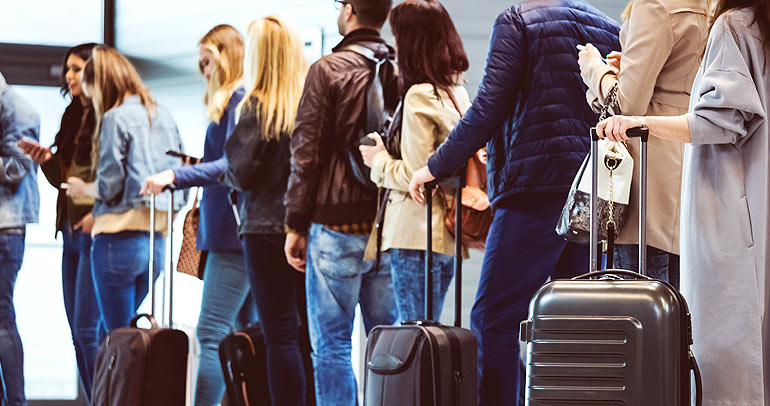
The global travel and tourism industry sits smack in the eye of a perfect storm. On the one hand, demand is up. Planes are packed. Our wanderlust is lustier than ever. On the other hand, rising inflation, lagging infrastructure, geopolitical uncertainty, staffing shortages, and COVID’s lingering impact have all converged into the stuff of nightmares — for travelers and the travel industry alike.
As researchers and advisors to global tourism boards and brands across the travel and tourism ecosystem, we are seeing some of these challenges hit certain players harder than others. On the bright side, recovery is on the horizon. But some geographies and industry sectors will face steeper challenges as five major headwinds converge upon them. We’re seeing opportunities for brands to get ahead of the storm and put the wind at their back.
These are the top five challenges facing the travel and tourism industry today, along with our perspective on navigating the way forward.

Travel Insight #1: Inflation means trade-offs and discretionary travel may lose out
Just when tourism was on the rebound, rising inflation came nipping at the heels of a travel boom. Escalent’s forthcoming 2022 Holiday Shopping & Travel Study revealed only 42% of consumers feel confident they’ll achieve their 2022 holiday travel plans (down 24 percentage points from 2021), and 49% of consumers are uncertain their holiday plans will be achieved (up 23 percentage points from 2021).
For the travel and tourism industry, inflation is a huge concern since it drives up product prices and affects consumers’ willingness to spend on discretionary travel. According to Euromonitor, 63% of travel executives said inflation was having a moderate to extensive impact on their businesses. Subsequently, over half of global travel companies acted in kind, by raising all or some of their prices. This was even higher in the Americas, where 59% of the companies raised all or some of their prices. Meanwhile, 44% of businesses accepted that they would suffer from having a lower profit margin by absorbing the inflationary costs rather than passing them on to their consumers to limit impact on their travel plans.
During inflationary times, it is common to see brands cut back on their marketing and advertising spend. While this reduces costs short term, it can be a setback to building long-term brand trust. In times of uncertainty, consumers tend to gravitate towards certainty, something a trusted brand can confer. And a destination is a brand. The more trust you can build amid uncertainty, the better.
Travel Insight #2: The ripple effects of geopolitical disruption
Geopolitical instability is also a key concern for the travel and tourism industry. The outlook for global travel and tourism for inbound spending is expected to be at 45% of 2019 levels, according to Euromonitor’s travel forecast model. The war in Ukraine is estimated to have caused a $7 billion decline in global inbound tourism, while Russian outbound tourism has all but collapsed under economic sanctions, airspace closures and flight bans. The loss of big-spending Russian visitors will impact travel destinations globally, but especially in Europe, the Caribbean and Turkey.
What happens when your high-value source market can’t travel? The ripple effects of geopolitical disruption are felt across regional clusters, forcing travel and tourism entities to rethink their source markets and reset their tourism marketing and targeting strategy.
Travel Insight #3: The travel and tourism infrastructure is in trouble
The pent-up travel demand is causing additional strain on the existing infrastructure, particularly for the airline sector. Problems with safety protocols and compliance with new national and international health standards are predicted to be made worse by capacity constraints when the industry recovers. This is expected to result in (even) longer lines, (more) crowded terminals and operational bottlenecks.
Social distancing measures have been lifted in many countries, including the US. But measures are still in place in many airports around the world, thus reducing airport capacity. Airports that operated close to their saturation capacity before the COVID crisis can expect to reach their maximum saturation capacity at just 60%–75% of their pre-COVID peaks.
According to ACI World, as air transport demand recovers, passenger demand will put more pressure on existing airport infrastructures. This may have socio-economic consequences, if not addressed in time. If long-term capacity constraints are not addressed through capital investments, it is estimated to lead to a reduction of up to 5.1 billion passengers globally, by 2040. For every million passengers that airports cannot accommodate due to airport capacity constraints in 2040, there would be 10,500 fewer jobs and 346 million USD less in GDP contribution from the industry.
Airports are often the “first impression” of a destination. A traveler’s airport experience sets the stage for the rest of the journey. When greeted with chaos and delays, even the most intrepid traveler can sour on the experience. Recently the US has made modest steps towards infrastructure improvement, including the Infrastructure Investment Act passed in November 2021, which includes spending for airports. While its impact will not be immediately felt, many travel associations have applauded the passing of this long overdue legislation.
Travel Insight #4: There’s no quick fix for the staffing shortage
If you’ve stepped foot in an airport this summer, you already know. The travel industry is facing a severe staffing challenge, particularly for customer-facing roles at hotels and airlines. Industry CEOs acknowledge that they are struggling to add staff to meet demand.
Airlines, in particular, are struggling to fill staffing requirements. Boeing’s 2021 Pilot and Technician Outlook voices concern that many airline workers who were furloughed during COVID may have left the industry permanently. The commercial airline industry needs 612,000 new pilots, 626,000 new maintenance technicians and 886,000 new cabin crew members over the next 20 years. Hotels and hospitality are also struggling, making it harder to deliver on guests’ expectations. Many hotels are shifting housekeeping services to a by-request-only model and some are cutting back on food and beverage amenities, including room service and restaurants.
What’s the precautionary tale to take away from this staffing mess? It can take decades to build brand trust, and one canceled flight, one bad stay, to destroy it. How people experience your brand — no matter if it’s in the best of times or the worst of times — stays with them. Travelers expect consistency from major brands. It will take time and investment for many airline and hospitality brands to rebuild trust in the quality and consistency of their brand experience.
Travel Insight #5: COVID is with us for the long haul
COVID travel restrictions are still impacting many elements of world tourism, with countries like China continuing to impose stringent restrictions and quarantines on visitors as well as Chinese outbound travelers.
In Asia Pacific, 83% of travel businesses report that ongoing COVID restrictions continue to have a moderate to extensive impact. This compares with 59% in Western Europe, according to Euromonitor. Although less, compared to 2021 levels, COVID concerns among travelers persist. Ongoing concerns, including new variants, affect the travel decisions of 55% of travelers, according to another recent study. Travelers are planning their trips cautiously, and nearly 70% are avoiding certain destinations, with 56% preferring close destinations and 56% avoiding crowded places.
Just as sanctions have grounded Russian travelers, COVID restrictions are keeping Chinese travelers homebound. Popular destinations for Chinese tourists such as Japan, Thailand, Singapore and Australia continue losing out on billions in tourism revenue. And countries with strict quarantine requirements like Japan continue to struggle. Between June 10 and July 10 this year, Japan hosted only 1,500 international tourists, according to data from Japan’s Immigration Services Agency. That’s down 95% from the same period in 2019. Who wants to spend half their holiday in quarantine? Destinations like Japan have focused on promoting domestic travel, but with COVID with us for the long haul, doubling down on domestic travel marketing and promotions is not a sustainable strategy.
Turn disruption into opportunity with tourism industry research and consulting
Escalent specializes in travel and tourism market research, traveler behavior, tourism investment strategy and consultative support across the travel and tourism ecosystem. Learn more about our Travel & Tourism practice and let us help you ride out the storm and go forth with confidence.

SOURCES CITED
(forthcoming) Escalent 2022 Holiday Shopping and Travel Study Please contact us if you would like to be notified when the report is available. View press release .
Voice of the Industry: Travel Survey, Facing New Challenges, Euromonitor, May 2022
Travel: Quarterly Statement Q1 2022, Euromonitor, May 2022
Holiday Barometer among Europeans, North Americans, Asians & Oceanians, Ipsos, June 2022
Japan is open to travel. So why aren’t tourists coming back? CNN, July 31, 2022
Deloitte travel outlook, The winding path to recovery 2022
Half of US Hospitality Workers Won’t Return in Job Crunch, Bloomberg, July 2021
Staff Shortages: World Travel & Tourism Council Travel Survey, May 2022
Related Industry: Travel & Tourism
Related Solution: Brand Positioning , Customer Experience Management , Market Assessment
Related Expertise: Secondary Research

Vivek leads Escalent’s Travel & Tourism practice where he works with tourism boards, airlines, hotels and hospitality brands across the globe, including in China, Africa, Southeast Asia, and the Middle East. A featured thought leader at global travel and tourism forums such as ITB, TTRA, and PCMA, his expertise spans the Travel & Tourism value chain. Vivek is an experienced business executive with expertise in various business elements including operations, business development and P&L management. A seasoned insights leader, he advises clients on market assessment and entry strategy, market sizing and growth strategies. An engineer by training, he holds an MBA in Strategy & Marketing from the Indian Institute of Management. Vivek has a keen interest in human psychology and believes that a transparent, win-all proposition is the key to creating a sustainable people-centric business.

Subscribe to Our Newsletter
Keep me informed. I’d like to receive occasional newsletters, event notifications, and thought leadership materials.
17430 College Parkway Livonia, MI 48152
P: +1 734 542 7600
- Escalent on LinkedIn
- Escalent on Twitter
- Escalent on Facebook
- Escalent on YouTube
©2024 Escalent and/or its affiliates. All rights reserved. Reg. U.S. Pat. & TM Off
Reimagining the $9 trillion tourism economy—what will it take?
Tourism made up 10 percent of global GDP in 2019 and was worth almost $9 trillion, 1 See “Economic impact reports,” World Travel & Tourism Council (WTTC), wttc.org. making the sector nearly three times larger than agriculture. However, the tourism value chain of suppliers and intermediaries has always been fragmented, with limited coordination among the small and medium-size enterprises (SMEs) that make up a large portion of the sector. Governments have generally played a limited role in the industry, with partial oversight and light-touch management.
COVID-19 has caused an unprecedented crisis for the tourism industry. International tourist arrivals are projected to plunge by 60 to 80 percent in 2020, and tourism spending is not likely to return to precrisis levels until 2024. This puts as many as 120 million jobs at risk. 2 “International tourist numbers could fall 60-80% in 2020, UNWTO reports,” World Tourism Organization, May 7, 2020, unwto.org.
Reopening tourism-related businesses and managing their recovery in a way that is safe, attractive for tourists, and economically viable will require coordination at a level not seen before. The public sector may be best placed to oversee this process in the context of the fragmented SME ecosystem, large state-owned enterprises controlling entry points, and the increasing impact of health-related agencies. As borders start reopening and interest in leisure rebounds in some regions , governments could take the opportunity to rethink their role within tourism, thereby potentially both assisting in the sector’s recovery and strengthening it in the long term.
In this article, we suggest four ways in which governments can reimagine their role in the tourism sector in the context of COVID-19.
1. Streamlining public–private interfaces through a tourism nerve center
Before COVID-19, most tourism ministries and authorities focused on destination marketing, industry promotions, and research. Many are now dealing with a raft of new regulations, stimulus programs, and protocols. They are also dealing with uncertainty around demand forecasting, and the decisions they make around which assets—such as airports—to reopen will have a major impact on the safety of tourists and sector employees.
Coordination between the public and private sectors in tourism was already complex prior to COVID-19. In the United Kingdom, for example, tourism falls within the remit of two departments—the Department for Business, Energy, and Industrial Strategy (BEIS) and the Department for Digital, Culture, Media & Sport (DCMS)—which interact with other government agencies and the private sector at several points. Complex coordination structures often make clarity and consistency difficult. These issues are exacerbated by the degree of coordination that will be required by the tourism sector in the aftermath of the crisis, both across government agencies (for example, between the ministries responsible for transport, tourism, and health), and between the government and private-sector players (such as for implementing protocols, syncing financial aid, and reopening assets).
Concentrating crucial leadership into a central nerve center is a crisis management response many organizations have deployed in similar situations. Tourism nerve centers, which bring together public, private, and semi-private players into project teams to address five themes, could provide an active collaboration framework that is particularly suited to the diverse stakeholders within the tourism sector (Exhibit 1).
We analyzed stimulus packages across 24 economies, 3 Australia, Bahrain, Belgium, Canada, Egypt, Finland, France, Germany, Hong Kong, Indonesia, Israel, Italy, Kenya, Malaysia, New Zealand, Peru, Philippines, Singapore, South Africa, South Korea, Spain, Switzerland, Thailand, and the United Kingdom. which totaled nearly $100 billion in funds dedicated directly to the tourism sector, and close to $300 billion including cross-sector packages with a heavy tourism footprint. This stimulus was generally provided by multiple entities and government departments, and few countries had a single integrated view on beneficiaries and losers. We conducted surveys on how effective the public-sector response has been and found that two-thirds of tourism players were either unaware of the measures taken by government or felt they did not have sufficient impact. Given uncertainty about the timing and speed of the tourism recovery, obtaining quick feedback and redeploying funds will be critical to ensuring that stimulus packages have maximum impact.
2. Experimenting with new financing mechanisms
Most of the $100 billion stimulus that we analyzed was structured as grants, debt relief, and aid to SMEs and airlines. New Zealand has offered an NZ $15,000 (US $10,000) grant per SME to cover wages, for example, while Singapore has instituted an 8 percent cash grant on the gross monthly wages of local employees. Japan has waived the debt of small companies where income dropped more than 20 percent. In Germany, companies can use state-sponsored work-sharing schemes for up to six months, and the government provides an income replacement rate of 60 percent.
Our forecasts indicate that it will take four to seven years for tourism demand to return to 2019 levels, which means that overcapacity will be the new normal in the medium term. This prolonged period of low demand means that the way tourism is financed needs to change. The aforementioned types of policies are expensive and will be difficult for governments to sustain over multiple years. They also might not go far enough. A recent Organisation for Economic Co-operation and Development (OECD) survey of SMEs in the tourism sector suggested more than half would not survive the next few months, and the failure of businesses on anything like this scale would put the recovery far behind even the most conservative forecasts. 4 See Tourism policy responses to the coronavirus (COVID-19), OECD, June 2020, oecd.org. Governments and the private sector should be investigating new, innovative financing measures.
Revenue-pooling structures for hotels
One option would be the creation of revenue-pooling structures, which could help asset owners and operators, especially SMEs, to manage variable costs and losses moving forward. Hotels competing for the same segment in the same district, such as a beach strip, could have an incentive to pool revenues and losses while operating at reduced capacity. Instead of having all hotels operating at 20 to 40 percent occupancy, a subset of hotels could operate at a higher occupancy rate and share the revenue with the remainder. This would allow hotels to optimize variable costs and reduce the need for government stimulus. Non-operating hotels could channel stimulus funds into refurbishments or other investment, which would boost the destination’s attractiveness. Governments will need to be the intermediary between businesses through auditing or escrow accounts in this model.
Joint equity funds for small and medium-size enterprises
Government-backed equity funds could also be used to deploy private capital to help ensure that tourism-related SMEs survive the crisis (Exhibit 2). This principle underpins the European Commission’s temporary framework for recapitalization of state-aided enterprises, which provided an estimated €1.9 trillion in aid to the EU economy between March and May 2020. 5 See “State aid: Commission expands temporary framework to recapitalisation and subordinated debt measures to further support the economy in the context of the coronavirus outbreak,” European Commission, May 8, 2020, ec.europa.eu. Applying such a mechanism to SMEs would require creating an appropriate equity-holding structure, or securitizing equity stakes in multiple SMEs at once, reducing the overall risk profile for the investor. In addition, developing a standardized valuation methodology would avoid lengthy due diligence processes on each asset. Governments that do not have the resources to co-invest could limit their role to setting up those structures and opening them to potential private investors.
3. Ensuring transparent, consistent communication on protocols
The return of tourism demand requires that travelers and tourism-sector employees feel—and are—safe. Although international organizations such as the International Air Transport Association (IATA), and the World Travel & Tourism Council (WTTC) have developed a set of guidelines to serve as a baseline, local regulators are layering additional measures on top. This leads to low levels of harmonization regarding regulations imposed by local governments.
Our surveys of traveler confidence in the United States suggests anxiety remains high, and authorities and destination managers must work to ensure travelers know about, and feel reassured by, protocols put in place for their protection. Our latest survey of traveler sentiment in China suggests a significant gap between how confident travelers would like to feel and how confident they actually feel; actual confidence in safety is much lower than the expected level asked a month before.
One reason for this low level of confidence is confusion over the safety measures that are currently in place. Communication is therefore key to bolstering demand. Experience in Europe indicates that prompt, transparent, consistent communications from public agencies have had a similar impact on traveler demand as CEO announcements have on stock prices. Clear, credible announcements regarding the removal of travel restrictions have already led to increased air-travel searches and bookings. In the week that governments announced the removal of travel bans to a number of European summer destinations, for example, outbound air travel web search volumes recently exceeded precrisis levels by more than 20 percent in some countries.
The case of Greece helps illustrate the importance of clear and consistent communication. Greece was one of the first EU countries to announce the date of, and conditions and protocols for, border reopening. Since that announcement, Greece’s disease incidence has remained steady and there have been no changes to the announced protocols. The result: our joint research with trivago shows that Greece is now among the top five summer destinations for German travelers for the first time. In July and August, Greece will reach inbound airline ticketing levels that are approximately 50 percent of that achieved in the same period last year. This exceeds the rate in most other European summer destinations, including Croatia (35 percent), Portugal (around 30 percent), and Spain (around 40 percent). 6 Based on IATA Air Travel Pulse by McKinsey. In contrast, some destinations that have had inconsistent communications around the time frame of reopening have shown net cancellations of flights for June and July. Even for the high seasons toward the end of the year, inbound air travel ticketing barely reaches 30 percent of 2019 volumes.
Digital solutions can be an effective tool to bridge communication and to create consistency on protocols between governments and the private sector. In China, the health QR code system, which reflects past travel history and contact with infected people, is being widely used during the reopening stage. Travelers have to show their green, government-issued QR code before entering airports, hotels, and attractions. The code is also required for preflight check-in and, at certain destination airports, after landing.
4. Enabling a digital and analytics transformation within the tourism sector
Data sources and forecasts have shifted, and proliferated, in the crisis. Last year’s demand prediction models are no longer relevant, leaving many destinations struggling to understand how demand will evolve, and therefore how to manage supply. Uncertainty over the speed and shape of the recovery means that segmentation and marketing budgets, historically reassessed every few years, now need to be updated every few months. The tourism sector needs to undergo an analytics transformation to enable the coordination of marketing budgets, sector promotions, and calendars of events, and to ensure that products are marketed to the right population segment at the right time.
Governments have an opportunity to reimagine their roles in providing data infrastructure and capabilities to the tourism sector, and to investigate new and innovative operating models. This was already underway in some destinations before COVID-19. Singapore, for example, made heavy investments in its data and analytics stack over the past decade through the Singapore Tourism Analytics Network (STAN), which provided tourism players with visitor arrival statistics, passenger profiling, spending data, revenue data, and extensive customer-experience surveys. During the COVID-19 pandemic, real-time data on leading travel indicators and “nowcasts” (forecasts for the coming weeks and months) could be invaluable to inform the decisions of both public-sector and private-sector entities.
This analytics transformation will also help to address the digital gap that was evident in tourism even before the crisis. Digital services are vital for travelers: in 2019, more than 40 percent of US travelers used mobile devices to book their trips. 7 Global Digital Traveler Research 2019, Travelport, marketing.cloud.travelport.com; “Mobile travel trends 2019 in the words of industry experts,” blog entry by David MacHale, December 11, 2018, blog.digital.travelport.com. In Europe and the United States, as many as 60 percent of travel bookings are digital, and online travel agents can have a market share as high as 50 percent, particularly for smaller independent hotels. 8 Sean O’Neill, “Coronavirus upheaval prompts independent hotels to look at management company startups,” Skift, May 11, 2020, skift.com. COVID-19 is likely to accelerate the shift to digital as travelers look for flexibility and booking lead times shorten: more than 90 percent of recent trips in China were booked within seven days of the trip itself. Many tourism businesses have struggled to keep pace with changing consumer preferences around digital. In particular, many tourism SMEs have not been fully able to integrate new digital capabilities in the way that larger businesses have, with barriers including language issues, and low levels of digital fluency. The commission rates on existing platforms, which range from 10 percent for larger hotel brands to 25 percent for independent hotels, also make it difficult for SMEs to compete in the digital space.
Governments are well-positioned to overcome the digital gap within the sector and to level the playing field for SMEs. The Tourism Exchange Australia (TXA) platform, which was created by the Australian government, is an example of enabling at scale. It acts as a matchmaker, connecting suppliers with distributors and intermediaries to create packages attractive to a specific segment of tourists, then uses tourist engagement to provide further analytical insights to travel intermediaries (Exhibit 3). This mechanism allows online travel agents to diversify their offerings by providing more experiences away from the beaten track, which both adds to Australia’s destination attractiveness, and gives small suppliers better access to customers.

Governments that seize the opportunity to reimagine tourism operations and oversight will be well positioned to steer their national tourism industries safely into—and set them up to thrive within—the next normal.
Download the article in Arabic (513KB)
Margaux Constantin is an associate partner in McKinsey’s Dubai office, Steve Saxon is a partner in the Shanghai office, and Jackey Yu is an associate partner in the Hong Kong office.
The authors wish to thank Hugo Espirito Santo, Urs Binggeli, Jonathan Steinbach, Yassir Zouaoui, Rebecca Stone, and Ninan Chacko for their contributions to this article.
Explore a career with us
Related articles.

Make it better, not just safer: The opportunity to reinvent travel

Hospitality and COVID-19: How long until ‘no vacancy’ for US hotels?
A new approach in tracking travel demand
UN Tourism | Bringing the world closer
Secretary-general’s policy brief on tourism and covid-19, share this content.
- Share this article on facebook
- Share this article on twitter
- Share this article on linkedin
Tourism and COVID-19 – unprecedented economic impacts
The Policy Brief provides an overview of the socio-economic impacts from the pandemic on tourism, including on the millions of livelihoods it sustains. It highlights the role tourism plays in advancing the Sustainable Development Goals, including its relationship with environmental goals and culture. The Brief calls on the urgency of mitigating the impacts on livelihoods, especially for women, youth and informal workers.
The crisis is an opportunity to rethink how tourism interacts with our societies, other economic sectors and our natural resources and ecosystems; to measure and manage it better; to ensure a fair distribution of its benefits and to advance the transition towards a carbon neutral and resilient tourism economy.
The brief provides recommendations in five priority areas to cushion the massive impacts on lives and economies and to rebuild a tourism with people at the center. It features examples of governments support to the sector, calls for a reopening that gives priority to the health and safety of the workers, travelers and host communities and provides a roadmap to transform tourism.
- Tourism is one of the world’s major economic sectors. It is the third-largest export category (after fuels and chemicals) and in 2019 accounted for 7% of global trade .
- For some countries, it can represent over 20% of their GDP and, overall, it is the third largest export sector of the global economy.
- Tourism is one of the sectors most affected by the Covid-19 pandemic, impacting economies, livelihoods, public services and opportunities on all continents. All parts of its vast value-chain have been affected.
- Export revenues from tourism could fall by $910 billion to $1.2 trillion in 2020. This will have a wider impact and could reduce global GDP by 1.5% to 2.8% .
- Tourism supports one in 10 jobs and provides livelihoods for many millions more in both developing and developed economies.
- In some Small Island Developing States (SIDS), tourism has accounted for as much as 80% of exports, while it also represents important shares of national economies in both developed and developing countries.

100 to 120 MILLON
direct tourism jobs at risk
Massive Impact on Livelihoods
- As many as 100 million direct tourism jobs are at risk , in addition to sectors associated with tourism such as labour-intensive accommodation and food services industries that provide employment for 144 million workers worldwide. Small businesses (which shoulder 80% of global tourism) are particularly vulnerable.
- Women, who make up 54% of the tourism workforce, youth and workers in the informal economy are among the most at-risk categories.
- No nation will be unaffected. Destinations most reliant on tourism for jobs and economic growth are likely to be hit hardest: SIDS, Least Developed Countries (LDCs) and African countries. In Africa, the sector represented 10% of all exports in 2019.

US$ 910 Billon to US$ 1.2 Trillon
in export from tourism - international visitors' spending
Preserving the Planet -- Mitigating Impacts on Nature and Culture
- The sudden fall in tourism cuts off funding for biodiversity conservation . Some 7% of world tourism relates to wildlife , a segment growing by 3% annually.
- This places jobs at risk and has already led to a rise in poaching, looting and in consumption of bushmeat , partly due to the decreased presence of tourists and staff.
- The impact on biodiversity and ecosystems is particularly critical in SIDS and LDCs. In many African destinations, wildlife accounts for up to 80% of visits, and in many SIDS, tourism revenues enable marine conservation efforts.
- Several examples of community involvement in nature tourism show how communities, including indigenous peoples, have been able to protect their cultural and natural heritage while creating wealth and improve their wellbeing. The impact of COVID-19 on tourism places further pressure on heritage conservation as well as on the cultural and social fabric of communities , particularly for indigenous people and ethnic groups.
- For instance, many intangible cultural heritage practices such as traditional festivals and gatherings have been halted or postponed , and with the closure of markets for handicrafts, products and other goods , indigenous women’s revenues have been particularly impacted.
- 90% of countries have closed World Heritage Sites, with immense socio-economic consequences for communities reliant on tourism. Further, 90% of museums closed and 13% may never reopen.

1.5% to 2.8 of global GDP
Five priorities for tourism’s restart.
The COVID-19 crisis is a watershed moment to align the effort of sustaining livelihoods dependent on tourism to the SDGs and ensuring a more resilient, inclusive, carbon neutral, and resource efficient future.
A roadmap to transform tourism needs to address five priority areas:
- Mitigate socio-economic impacts on livelihoods , particularly women’s employment and economic security.
- Boost competitiveness and build resilience , including through economic diversification, with promotion of domestic and regional tourism where possible, and facilitation of conducive business environment for micro, small and medium-sized enterprises (MSMEs).
- Advance innovation and digital transformation of tourism , including promotion of innovation and investment in digital skills, particularly for workers temporarily without jobs and for job seekers.
- Foster sustainability and green growth to shift towards a resilient, competitive, resource efficient and carbon-neutral tourism sector. Green investments for recovery could target protected areas, renewable energy, smart buildings and the circular economy, among other opportunities.
- Coordination and partnerships to restart and transform sector towards achieving SDGs , ensuring tourism’s restart and recovery puts people first and work together to ease and lift travel restrictions in a responsible and coordinated manner.

a lifelive for
SIDS, LDCs and many AFRICAN COUNTRIES
tourism represents over 30% of exports for the majority of SIDS and 80% for some
Moving Ahead Together
- As countries gradually lift travel restrictions and tourism slowly restarts in many parts of the world, health must continue to be a priority and coordinated heath protocols that protect workers, communities and travellers, while supporting companies and workers, must be firmly in place.
- Only through collective action and international cooperation will we be able to transform tourism, advance its contribution to the 2030 Agenda and its shift towards an inclusive and carbon neutral sector that harnesses innovation and digitalization, embraces local values and communities and creates decent job opportunities for all, leaving no one behind. We are stronger together.

RESOURCES FOR CONSEVATION
of natural and cultural heritage
Related links
- Policy Brief: Tourism and COVID-19
- The Impact of COVID-19 on Tourism
- António Guterres - Video
- Hospitality Investor
- Hotel Management
- R&R Forum
- Digital Content Hub
- Architecture and Design
- Profitability
- Serviced Apartments
- Senior Living
- Student Accommodation
- Northern Europe
- Southern Europe
- Asia-Pacific
- Capital Talks
- Whitepapers
Five big challenges facing the travel and tourism industry in 2024
Will Chinese tourists look inwards or finally outwards in 2024? Could an unprecedented number of elections globally influence who travels and when? Can Paris make a permanent gain out of the Olympics and will conflict continue to derail some tourism economies?
Amid it all, could Gen Z change the shape of tourism by asserting an environmentally consciousness about travel decisions?As investors and developers piece together the global influences that will shape the hospitality real estate market in 2024, we pick out five defining macro-themes for the year ahead.
Visas: China looks outward and inward
It is nearly a year since China fully reopened its borders to foreign visitors, and almost a year since Beijing withdrew advice warning against overseas travel. Yet travel to and from China has not recovered to pre-pandemic levels, though domestic travel has surged.
“If you use 2019 as a benchmark, travel and tourism contributed 11.6% to the Chinese economy,” says Julia Simpson, president and chief executive of the World Travel & Tourism Council (WTTC).In that year, the travel and tourism industry employed 82 million people in China and was valued at $1.8 trillion, while recent analysis released by WTTC and Oxford Economics shows a dip to a 7.9% contribution in 2023, employing about 74 million people and worth $1.48 trillion.
Yet, with the hold-up of issuing new visas an ongoing issue, inward traffic is becoming a major factor."This data clearly shows the appetite to travel remains incredibly strong. Chinese travellers want to explore the world once again and international travellers are eager to return,” says Simpson.
According to data published in January by travel booking site Trip.com, the top five international destinations for Chinese tourists in 2023 were: Thailand; Japan; South Korea; Singapore and Malaysia.China recently entered into a reciprocal agreement with Thailand for permanent waiver of visa requirements for citizens of the two countries from March 2024 and previously implemented visa-free travel for five European countries (France, Germany, Italy, The Netherlands and Spain) and Malaysia, allowing ordinary passport holders to stay in China for up to 15 days without a visa. China has also streamlined entry regulations for US citizens.
Impact: The great Chinese exodus is yet to materialise and it may be a year when inward and inter-continental travel continues to dominate, boosting the Chinese travel economy.
Elections: The year of the vote
More than two billion people across 50 countries are expected to go the polls this year, accounting for countries that are home to nearly half the world’s population – a scale that has never happened in a single year before.
Among the polls are seven out of the world’s 10 most populous nations: Bangladesh kicked off the election calendar on January 7; plus India, the United States, Indonesia, Pakistan, Russia and Mexico.
While the impact should be contained around the election period, data on previous US elections suggest that the industry can expect a lag around crucial polling.US-based travel agency consortium Virtuoso, which has around 2,300 company partners, sold $30 billion worth of transactions in 2019. Evaluating the impact of the last three American presidential elections on travel bookings, Virtuoso’s VP global public relations Misty Belles found that the company’s usual double-digit growth was curtailed to roughly 3% in election years, with over $4 billion in projected missed revenue for the previous election in 2020.
No matter why travel dips during election cycles, the impact doesn’t end on results day, she says. Lags in spending continue through the ‘lame duck’ period of the outgoing President and the early days of a new administration, regardless of who resides in the White House. After the first 100 days of a new presidential term, travellers typically set their sights on summer vacations.
Impact: With an unprecedented number of people heading to the polls and the likelihood of some tight elections, the effect on travel is unpredictable but could cause an autumn lag in the UK and US.
Sports events: Everything to play for
This summer’s football Euros and impending African Cup of Nations will add to the global sports calendar in 2024 but of course the big one is the Paris Olympics. Hosting major events is expensive but potentially hugely profitable, with an extra three million people expected in Paris, increasing tourism spending by up to €4 billion according to market research provider Euromonitor International.
Alexander Göransson, senior consultant at Euromonitor International, points out that the Games are expected to attract 15 million spectators, including locals and domestic day trippers.
Göransson says that experience from previous Games shows that Olympic visitors spend more than regular visitors and that accommodation providers will be the main winners, although high prices may put people off. “There is a lot being written about hoteliers significantly hiking their prices during the Paris Olympics, typically by an order of three relative to August 2023 and summer 2024 before and after the games. This is also in line with some checks on booking platforms for like-for-like hotels. The average rate is currently reported to be €699 during the games versus €169 in August 2023,” Göransson says.
However, he notes that only 1.5 million tickets have been sold to non-French residents, circa 10% of the total.
“In the context of hotels this will be interesting as given the vast majority of visitors will be from France, there will be more daytrips, but more importantly a lot of French visitors will have friends and relatives in Paris who they can stay with, which given the Olympic mark-ups is likely,” he adds. “I would not rule out that there may be some last-minute price cutting. When the games were in London price increases were more modest, where prices less than doubled.”
Impact: Euromonitor International expects a steady increase in inbound visitors to France and its capital city from 2025.
Conflict: Contained but major regional impacts
The war in Ukraine and the ongoing operations in Gaza by Israel have had little impact on global travel, but have hit the regions and those around them heavily. That is likely to be the ongoing story of 2024.
Following last summer’s strong tourism demand, international tourist arrivals to Europe are only 3.2% below 2019 levels, and nights are down by 1.3% for the January-September period, according to the most recent European Travel Commission (ETC) figures.
However, while Southern European and Mediterranean destinations, notably Serbia (+15%), Montenegro (+14%), Portugal (+11%), Turkey (+8%), Malta, and Greece (both +7%) have benefitted, among Eastern European countries neighbouring Russia and Ukraine, and those that are normally reliant on Russian travellers, have registered the sharpest declines: Estonia (-27%), Latvia (-30%), and Lithuania (-33%).While the number of tourists visiting Israel rose in 2023 compared with 2022, visitor numbers plunged in October after the Hamas attacks and remained low for the rest of the year, the Israeli Tourism Ministry said.
Overall in 2023, 3 million tourists entered Israel, up from 2.7 million in 2022, but December was the worst month with just 52,800 tourists, compared with typically over 300,000 per month. S&P Global Ratings believes Lebanon, Egypt, and Jordan are most exposed, due to their geographic proximity and the potential for some aspects of the conflict to expand across their borders. Last year, tourism contributed 26% of Lebanon's current account receipts. For Jordan and Egypt, the figure was 21% and 12%, and for Israel, 3%.
Impact: While conflicts seem not to have dissuaded travellers generally, those countries heavily impacted already are unlikely to see any change.
Sustainability: Travellers demand eco-options
Nothing new in the rise of sustainability but analyst Mintel believes that in 2024 travel brands can tap into the sustainable accommodation sector by promoting a range of differing cost options.
A number of operators are promoting more sustainable choices for consumers, by unveiling ‘sustainable holiday’ tabs in which travellers can browse through a range of different hotel options, all accredited by the Global Sustainable Tourism Council (GSTC).
Mintel says that it is imperative for travel brands to step up and take accountability for their environmental impact, particularly as issues surrounding sustainability permeate into every aspect of daily lives.
“Based on the success of the food industry’s nutrition traffic light system, consumers want brands to use a similar system that makes it easy to understand the environmental impact of the products they’re thinking of buying and helps them make more sustainable choices,” says Richard Cope, senior trends consultant, Mintel Consulting.
Travel platform Booking.com also notes that “sweltering conditions” are accelerating a rise in travellers chasing cooler climes to travel to. In a UK survey, 42% reported that climate change will impact the way they plan their holiday in 2024, while 43% said that as temperatures soar close to home, they will use their holiday to cool down elsewhere.
In 2024, in exchange for contributing to conservation efforts, sustainable itineraries will give travellers exclusive access to the places that they are helping preserve, Booking.com speculates, while sustainable travel apps will offer rewards such as experiences with locals in off-the-beaten-path areas or visiting remote locations that tourists otherwise have limited access to.
Impact: From ESG and real estate to the consumer mind-set, sustainability
Future Changes and Challenges for Post-Covid-19 Tourism
- First Online: 29 April 2024
Cite this chapter

- Anna Trono 4
In conformity with the priorities established in the UNWTO’s global guidelines, today more than ever, the recovery of the tourism sector can contribute to the development and implementation of plans that serve the sustainable development objectives laid out in Agenda 2030. The new tourism sector will thus have a responsible vision of the objectives in terms of public health, social inclusion, conservation of biodiversity, climate safeguards, the circular economy, good governance and sustainable finance. The current vulnerability of tourism could thus create the conditions for a recalibration of the world economic structure, contributing to recovery plans on a broader scale. Like all crises, the current one also represents an opportunity, in this case to accelerate the creation of sustainable tourism models. The resilience of this tourism will depend on the sector’s ability to balance the needs of communities and the planet with the socio-economic advantages it generates.
This is a preview of subscription content, log in via an institution to check access.
Access this chapter
- Available as PDF
- Read on any device
- Instant download
- Own it forever
- Available as EPUB and PDF
- Durable hardcover edition
- Dispatched in 3 to 5 business days
- Free shipping worldwide - see info
Tax calculation will be finalised at checkout
Purchases are for personal use only
Institutional subscriptions
Becken, S., & Loehr, J. (2022). Tourism governance and enabling drivers for intensifying climate action. Journal of Sustainable Tourism . https://doi.org/10.1080/09669582.2022.2032099
Bizzarri, C., & Pedrana, M. (Eds.). (2018). Gli impatti dei cambiamenti climatici sul turismo. Un’analisi delle politiche di intervento . Led Edizioni Universitarie. https://doi.org/10.7358/rst-2017-01-bipe
Book Google Scholar
Bosselmann, K. (Ed.). (2008). The principle of sustainability: Transforming law and governance . Ashgate.
Google Scholar
Buhalis, D., & Darcy, S. (Eds.). (2011). Accessible tourism: Concepts and issues . Channel View Publications.
Cardillo, M. C., Cavallo, F. L., Arturo, G., & Stefano, M. (2023). Isole, turismo e ambiente. Geotema, 67 , 3–7.
Castronuovo, V. (2022). Le destinazioni turistiche diffuse: resilienza e sviluppo. In A. Marasco, G. Maggiore, A. Morvillo, & E. Becheri (Eds.), Rapporto su Turismo Italiano. XXV edizione. 2020–2022 (pp. 171–186). CNR Edizioni.
Cdp, Ey, & Luiss. (2020). L’impatto del Covid-19 sul turismo – Studio di Cdp, EY e LUISS . https://www.confindustria.ge.it/download-imprese/38-studi-e-ricerche/368-l-impatto-del-covid-19-sul-turismo-studio-di-cdp-ey-e-luiss-giugno-2020.html
Dall’Ò, E., Falconieri, I., & Gug, G. (2022). Il tempo delle emergenze. Prospettive teoriche e campi di ricerca per l’antropologia tra disastri e cambiamenti climatici. Antropologia, 9 (2), 45–71.
Durigon, C. (2022). Transition pathways for tourism: 27 actions for a long-term transition . https://twissen.com/en/trends-en/policies-funding/transition-pathways-for-tourism/
European Commission, Directorate-General for Internal Market, Industry, Entrepreneurship and SMEs. (2022). Transition pathway for tourism . Publications Office of the European Union. https://data.europa.eu/doi/10.2873/344425
Farsari, I. (2023). Exploring the nexus between sustainable tourism governance, resilience and complexity research. Tourism Recreation Research, 48 (3), 352–367. https://doi.org/10.1080/02508281.2021.1922828
Article Google Scholar
Gössling, S., Scott, D., & Hall, M. C. (2021). Pandemics, tourism and global change: A rapid assessment of COVID-19. Journal of Sustainable Tourism, 29 (1), 1–20. https://doi.org/10.1080/09669582.2020.1758708
Hall, C. M. (2010). Climate change and its impacts on tourism: Regional assessments, knowledge gaps and issues. In A. Jones & M. Phillips (Eds.), Disappearing destinations: Climate change and future challenges for coastal tourism (pp. 10–29). CABI.
Martini Barzolai, M., & Moretti, A. (2020). Le reti in ambito turistico: un buono strumento per ripartire? In A. Morvillo & E. Becheri (Eds.), Rapporto Sul Turismo Italiano (XXIV ed.). CNR Edizioni.
Meler, M., & Ham, M. (2012). Green marketing for green tourism. In Tourism & hospitality management, conference proceedings (pp. 130–139).
Michelozzi, P., De Sario, M., & de Donato, F. (2020). Cambiamenti climatici ed epidemie. Siamo vicini al punto di non ritorno? Forward , 20. https://forward.recentiprogressi.it/it/rivista/numero-20-avviene/articoli/cambiamenti-climatici-ed-epidemie-siamo-vicini-al-punto-di-non-ritorno/
Mihalic, T., Mohamadi, S., Abbasi, A., & Dávid, L. D. (2021). Mapping a sustainable and responsible tourism paradigm: A bibliometric and citation network analysis. Sustainability, 2021 (13), 853. https://doi.org/10.3390/su13020853
Ministero dell’Ambiente e della Sicurezza Energetica. (2022). Piano Nazionale di Adattamento ai Cambiamenti Climatici 61/103. https://www.mase.gov.it/sites/default/files/archivio/allegati/clima/PNACC_versione_dicembre2022.pdf
Ministero delle infrastrutture e della mobilità sostenibili. (2022). Piano Nazionale di Adattamento ai Cambiamenti Climatici . https://www.mase.gov.it/
Ministry of Environment and Energy Security, (2023). National Climate Change Adaptation Plan ANNEX II. Methodologies for establishing local climate change adaptation strategies and plans . https://www.mase.gov.it/sites/default/files/PNACC_II_Allegato_Metodologie_Strategie_Piani_Locali.pdf
Rizzo, L. S., Rizzo, R. G., & Trono, A. (2013). Religious itineraries as the driving forces behind sustainable local development in the Veneto? Towards a proposal for promoting an unusual and often “subliminal” form of heritage: Sanctuaries and minor churches. AlmaTourism, 7 , 59–92.
Ruggeri, B., & Magnani, E. (2019). Turismo, piccole isole e cambiamenti climatici: le politiche della Repubblica di Fiji tra mitigazione e adattamento. Geotema, 67 , 91–100.
Sabatini, F. (2023). Dalla remoteness all’attrattività turistica. Un’analisi di discorsi nazionali e locali sulle aree interne. Rivista geografica italiana, CXXX (2), 5–21. https://doi.org/10.3280/rgioa2-2023oa15919
Schmude, J., & Namberger, P. (2022). From “Overtourism” to “tourism over”? The development of selected market segments in times of COVID-19 with the example of Germany. In A. Trono, T. Duda, & J. Schmude (Eds.), Tourism recovery from COVID-19. Prospects for over- and under-tourism regions (pp. 147–158). World Scientific.
Chapter Google Scholar
Silva, C. N. (Ed.). (2022). Local government response towards Covid-9 pandemic . Springer.
Souca, L. (2010). Accessible tourism – The ignored opportunity. Annals of the University of Oradea. Economic Science, 1 , 1154–1157
Tanzarella, A. (2014). La declinazione della sostenibilità al turismo. In G. J. Marafon, M. A. Sotratti, & M. Faccioli (Eds.), Turismo e território no Brasil e na Itália: Novas perspectivas, novos desafios (pp. 253–272). SciELO – EDUERJ.
Trono, A., & Castronuovo, V. (2022). Reorganisation of businesses and processes and development of policies for safely emerging from the Covid-19 pandemic in Italy. In C. N. Silva (Ed.), Local government response towards Covid-9 pandemic (pp. 341–362). Springer.
Trono, A., & Castronuovo, V. (2023). Pilgrimage tourism, accessibility and local communities in Western countries. In X. M. Santos Solla & R. N. Progano (Eds.), Host communities and pilgrimage tourism: Asia and beyond (pp. 143–161). Springer.
Trono, A., Duda, T., & Schmude, J. (Eds.). (2022). Over tourism and “tourism over”. Recovery from COVID19 tourism crisis in regions with over and under tourism . World Scientific Publisher.
UNWTO. (2008). Climate change and tourism: Responding to global challenges . UNWTO.
UNWTO. (2020). Impact Assessment of the COVID-19 outbreak on international tourism . Retrieved March 27, 2020. http://www.ekof.bg.ac.rs/wp-content/uploads/2014/05/06-Dodatni-materijal_uticaj-covid19-na-turizam.pdf
UNWTO. (2023). World Tourism Barometer, 21(1). https://webunwto.s3.eu-west-1.amazonaws.com/s3fs-public/2023-05/UNWTO_Barom23_02_May_EXCERPT_final.pdf?VersionId=gGmuSXlwfM1yoemsRrBI9ZJf.Vmc9gYD
Zsarnoczky, M. (2017). Accessible tourism in the European Union. In Conference paper 6 th Central European conference in regional science – CERS, 2017. https://www.researchgate.net/publication/320226151
Download references
Author information
Authors and affiliations.
Department of Cultural Heritage, University of Salento, Lecce, Italy
You can also search for this author in PubMed Google Scholar
Corresponding author
Correspondence to Anna Trono .
Editor information
Editors and affiliations.
Department of Linguistic-Literary, Historical-Philosophical and Legal Studies (DISTU), University of Tuscia, Viterbo, Italy
Valentina Castronuovo
Faculty of Tourism Management, Hospitality and Entrepreneurship, Cyprus University of Technology (CUT), Paphos, Cyprus
Petros Kosmas
Rights and permissions
Reprints and permissions
Copyright information
© 2024 The Author(s), under exclusive license to Springer Nature Switzerland AG
About this chapter
Trono, A. (2024). Future Changes and Challenges for Post-Covid-19 Tourism. In: Trono, A., Castronuovo, V., Kosmas, P. (eds) Managing Natural and Cultural Heritage for a Durable Tourism. Springer, Cham. https://doi.org/10.1007/978-3-031-52041-9_5
Download citation
DOI : https://doi.org/10.1007/978-3-031-52041-9_5
Published : 29 April 2024
Publisher Name : Springer, Cham
Print ISBN : 978-3-031-52040-2
Online ISBN : 978-3-031-52041-9
eBook Packages : History History (R0)
Share this chapter
Anyone you share the following link with will be able to read this content:
Sorry, a shareable link is not currently available for this article.
Provided by the Springer Nature SharedIt content-sharing initiative
- Publish with us
Policies and ethics
- Find a journal
- Track your research

The "Good Tourism" Blog
For diverse perspectives on sustainable tourism & responsible travel ... because travel & tourism is everyone's business., what are tourism’s biggest challenges & threats over the next five years to 2027.
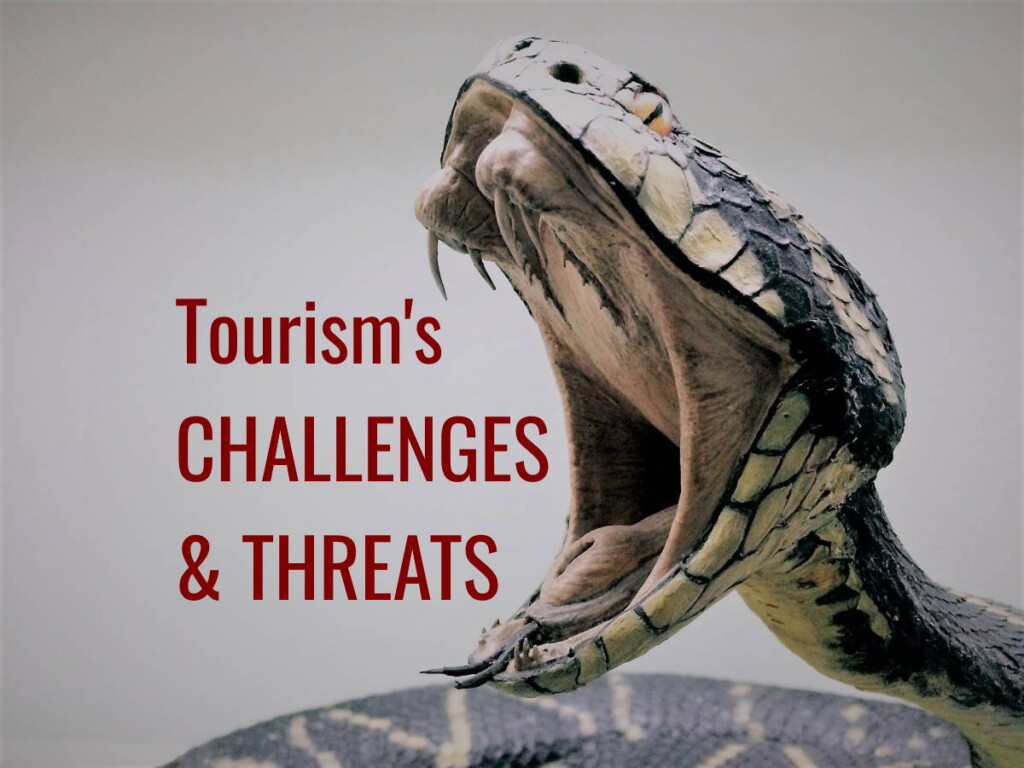
Over the next five years, what is the single biggest challenge or threat facing tourism where you work, or that you have identified through your research and study?
And what are the key strategies that your organisation, destination, or the industry at large should employ to overcome it?
It’s a “Good Tourism” Insight Bites question.
Your correspondent put the question to a range of travel & tourism stakeholders — “GT” Insight authors, “GT” Partners, and their invitees — and invited emailed written responses of no more than 300 words.
Thanks to the 15 respondents who shared their thoughts. Their answers appear in the order received. Click/touch a name to go to their answer:
- Greg Bakunzi — Reviving community-led programs in Rwanda
- Saverio Francesco Bertolucci — Mass travel, undercapacity, and overtourism
- Sudipta K Sarkar — The low quality of tourism & hospitality employment
- K Michael Haywood — The ‘great resignation’ from tourism & hospitality jobs
- Edwin Magio — Climate change & climate action
- Wolfgang Georg Arlt — ‘The climate catastrophe’
- Jim Butcher — Transportation & energy
- Cato Holterman — Tourism is ‘highly sensitive to climate change’
- Yesaya Sandang — Reinventing tourism for ‘ecological integrity’ in Indonesia
- Peace Mutoni — Slower growth, new markets for Rwanda
- Shamiso Nyajeka — Poor governance in African tourism development
- Richard A Shepard — COVID, war, inflation … What now for the Black Sea?
- Issoufou Adamou Hassane — Social and economic stability in Niger
- Travis Clark — Success is a threat to Khao Sok, Thailand
- Jonathon Day — ‘ Crossing the chasm’: Mainstreaming sustainability in tourism
What do you think?
Previous “GT” Insight Bites:
- ‘Tourism is built on the backbone of white supremacy’. What do you think?
- Really, what’s the difference? ‘Sustainable tourism’ vs ‘regenerative tourism’
- Want a career in tourism? Important things you should know
- Diverse perspectives on travel & tourism and a fairer world
- Diverse perspectives on economic degrowth and tourism
- Diverse perspectives on visitor dispersion
Reviving community-led programs in Rwanda
Greg bakunzi , founder, red rocks initiative for sustainable development & red rocks rwanda.
Red Rocks Initiative for Sustainable Development works hand in hand with its sister social enterprise Red Rocks Eco-tours Rwanda with a mandate to link tourism, conservation, and sustainable development in our community

As we look forward to the next years — continuing to mitigate the negative effects of the COVID-19 pandemic on our village as a travel destination — we are heavily challenged with a need to revive our community-led programs.
These programs were the sole income-generating activities for our local people prior to the pandemic.
We are committed to helping our community bounce back through a relief and response campaign.
The concept is based on the belief that we shall only be able to pioneer growth after the pandemic by putting people first; giving them programs and projects that offer skills training and job support, while meeting the needs of different groups of community members.
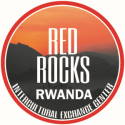
As we work with like-minded individuals to rebuild our society, we use approaches such as workshops and sensitisation campaigns to equip local people with the knowledge and opportunities that will allow gradual social and economic growth within the community.
We are optimistic that, by joining efforts with other community partners, we can return to normal lives as a tourism destination.
We believe that we can contribute to wider societal recovery based on the economic growth, jobs, and opportunities to transform lives that tourism offers, while ensuring our programs address the need for environmental and socio-cultural sustainability, conservation, and climate action.
Back to menu ^
Mass travel, undercapacity, and overtourism
Saverio francesco bertolucci , administrative assistant, alcambarcelona , spain.
Due to globalisation and the experiential economy trend, tourism destinations risk suffering from undercapacity issues, leading to overtourism.

Post-pandemic data show alarming tourism arrivals trends, which do not follow the same pace of destination development.
In the short-run, many established and emerging destinations will have to face numbers of tourists that they will not be able to sustain nor accommodate
Nowadays, society expects a lot, and in a short time. Management and planning procedures are proven not to be as fast as society wishes and, therefore, mass travel, undercapacity, and overtourism are together going to present the main challenge for the majority of growing tourism destinations.
The low quality of tourism & hospitality employment
Sudipta k sarkar , senior lecturer in tourism management, anglia ruskin university , uk.
A pertinent challenge that is relatively less discussed across tourism circles is the quality of tourism employment.

Tourism jobs, across all sectors, are perceived to be ‘low-skilled’, less creative, repetitive, and less socio-economically rewarding.
Tourism corporations make profits comparable to their counterparts in other (high-profit) sectors like tech or finance, but that does not translate into jobs that are as lucrative or as esteemed as in those sectors.
The undesirability of the jobs available has been one of the main reasons for the grave shortage of hospitality staff in the current post-pandemic scenario.
Hospitality jobs are perceived to be less fulfilling, with long working hours, lower remuneration, and fewer opportunities for creativity and growth.
Many who lost hospitality jobs during the pandemic have moved to other sectors that can offer relatively more rewarding careers.
Therefore, there is an urgent need to transform tourism employment into a career that is more knowledge-based, innovation-oriented, and that requires higher-level skills and considerable levels of creativity and critical thinking, resulting in higher remuneration.
This requires tourism businesses to devise higher-quality, higher-value experiences and services that will require knowledge and creativity to produce and deliver.
Besides, employee work-life balance, particularly in the hospitality sector, needs to improve. Work-life balance in the hospitality industry falls short of other industries. And the lower salaries make things worse.
Moreover, tourism and hospitality is a highly volatile industry on the ‘front lines’ of society’s interactions with the wider world. As such it is vulnerable to disease, natural calamities, and violence (whether from terrorism, socio-political unrest, or random acts) that often leads to job losses.
Therefore, producing high-quality jobs that offer opportunities for creativity and self-actualisation, higher remuneration, and better work-life balance is crucial to allure and retain a talented workforce.
The ‘great resignation’ from tourism & hospitality jobs
K michael haywood , professor emeritus, university of guelph , canada.
Climate crises, without a doubt. Inflationary pressures and the emergence of economic woes, well of course.

But, what happens when most operators throughout the world remain unable to attract or keep employees?
- Their ability to remain solvent in the immediate term becomes severely compromised.
- Their inability to avoid a deterioration in the quality of destination experiences threatens integrities and identities.
The ‘great resignation’ may bewilder, but when employees feel alienated and disenfranchised from their jobs, the effects reverberate and cascade throughout communities.
Rectification begins by digging to understand the origins of peoples’ discontent that is propelling nationalistic fervor, populist rhetoric, and intolerance of the ‘other’.
Blame, to a great extent, can be levelled at the adversities caused by the financialisation of economies and markets which exerts significant influence over both economic policy and corporate behaviour. What bevaviour?
- Behaviour that continues to prioritise short-term gains through demands to maintain a limited version of shareholder value .
- Behaviour that downplays desires to create functional, emotional, social, and life affirming value for key stakeholders — employees, visitors, and citizens — including delivery on ESG requirements .
- Behaviour that fosters toxic organisational cultures, a diminution of trust, disinterest in the ethics of care , and a surfeit of contractual relationships that ignore covenantal relationships with employees.
For aeons, touristic service work has had an image problem.
It’s not that the industry isn’t favoured for its job-creating potentiality, but that the material benefits earned from employment are expected to act as proxies for (what few consider to be) purposeful and meaningful work.
Pursuing and promoting the concept of ‘ community shared value ’ as the ethos of ‘good tourism’ may help. But, shared value will remain a non-starter until the ‘great resignation’ is annulled through the benevolent actions of covenantal leaders .
Climate change & climate action
Edwin magio , teaching & research assistant, moi university , kenya; commonwealth scholar, leeds beckett university , uk.
A foray into the existing literature shows that tourism faces a number of challenges.

These include, but are not limited to, climate change, overtourism, COVID-19, poaching, wildlife loss, safety, and security.
Arguably, the biggest challenge that has become apparent in most destinations is climate change.
Climate change is a major threat to tourism.
Its impacts — such as erosion, storms, sea level rise, extreme temperatures, disruption of habitats, and damage to infrastructure — are already being felt in many destinations.
For example, changes in temperature and rainfall in the Maasai Mara National Reserve in Kenya are leading to a decrease in wildlife and vegetation.
Now is the time to act.
There is no stable future for the tourism industry if the climate crisis and all its disruptive consequences are not addressed.
So, if we want to create more prosperous and sustainable tourism, we cannot ignore it.
Organisations, destinations, and the whole industry must develop measures to reduce greenhouse gas emissions to deal with climate change for the benefit of our communities and planet.
There are already numerous reports, regulations, policies, legislation, recommendations, campaigns, and case studies on best practices for companies and communities to achieve the goals of the Paris agreement.
However, all of this must be implemented.
There may not be a better time to act than now.
‘The climate catastrophe’
Wolfgang georg arlt , ceo, meaningful tourism center , germany.
There can only be one answer: The climate catastrophe.

Many players in the industry still dream of going back to the ‘good old times’ before the pandemic, when actually they were already characterised by discussions about overtourism and unnecessary pollution.
The climate catastrophe is changing the parameters for most destinations and service providers. For example:
- Many beaches and city centres will become too hot,
- Rivers will become unnavigable for cruises during their high summer seasons due to lack of water, and
- Ski resorts will face rising production costs and growing resistance to artificial snow …
… not in 2050, but within the next five years.
The rising cost of mitigating the economic effects of climate change will furthermore result in a decrease in global consumer spending power.
A key strategy of the Meaningful Tourism Center, besides providing training and consultation services, is the establishment of a Meaningful Tourism Index.
The Index will use a sixfold bottom line; measuring tourism by including all six major destination stakeholders: Visitors, the host community, employees, companies, governments, and the environment.
The Index is a major tool for destinations and companies to understand their position and to identify their strengths and weaknesses.
During the pandemic, everybody agreed that simply measuring arrivals or overnights is not enough; that key performance indicators (KPIs) have to be developed that measure the sustainability of tourism and its costs and benefits for all stakeholders.
Unfortunately, this has been all but forgotten. The UNWTO, for example, is measuring tourism’s post-COVID recovery by using only arrivals figures.
Transportation & energy
Jim butcher , reader, canterbury christ church university , uk.
The biggest challenge facing tourism is not really about tourism. It is the need for sustained high levels of investment in infrastructure and technology.

This will involve governments providing the conditions for individuals and businesses to thrive: modern airports, public transport systems, better roads, and affordable and reliable energy.
Enhanced mobility benefits tourism and improves lives and economic productivity. And investment in public transport makes cities liveable, ‘visitable’, and attractive for investment.
Yet the transport infrastructure in many places is crumbling.
Energy infrastructure is also key.
Rather than ‘net zero’ per se , our emphasis should be on the provision of cheaper, lower-emission, and low-pollution energy for all; to fuel development, especially in poorer countries.
We — the tourism industry included — currently find ourselves held back by the failure to invest in nuclear and renewables over decades.
To address this challenge we need democratic, interventionist states able to provide the investment and future orientation that individual firms on their own can’t.
We also need to challenge the declinism that tends to caricature development as an environmental threat or cultural imposition.
In the universities we’ve had the ‘cultural turn’, ‘moral turn’, and ‘local turn’. I propose a ‘future turn’; an orientation towards what could be rather than what is .
That sounds utopian, but I’d argue there is a disjuncture between the great technological and social potential for human advancement through sustained investment, and the pessimistic and inward-looking emphasis all too often apparent.
We have the potential for new energy and mobility revolutions. We have the prospect of hydrogen- and battery-powered aircraft, cheap light tram networks, new-generation nuclear, more efficient renewables, and improved battery capacity.
It is important for tourism, and much else, that higher and sustained investment in technology and infrastructure is prioritised.
Tourism is ‘highly sensitive to climate change’
Cato holterman, intern, khiri travel , thailand.
Tourism is an economic sector that is highly sensitive to climate change. Where I am now based, in Southeast Asia, climate change will be the biggest threat and challenge to the tourism industry over the next five years.

Natural disasters caused by climate change, such as heat waves, floods, storms, and hurricanes, are increasing, which leads to a decrease in the allure of a destination. Tourists may choose other holiday destinations that are not yet as significantly affected.
The climate change phenomenon cannot easily be controlled, but we can adopt adaptation and mitigation strategies to maintain long-term tourism activity.
Tourism destinations exposed to extreme weather and natural disasters have to be able to withstand impacts on infrastructure and disruptions to commercial activity. Furthermore they will require emergency preparedness measures to ensure visitors and hosts remain safe.
Inevitably, adaptation, preparedness, maintenance, and insurance costs will increase, which will reduce the profitability and viability of those destinations.
Tourism, on the other hand, is not only a victim. Tourism activities also emit greenhouse gases, which is one of the causes of global warming.

Strategies that tourism companies and destinations can employ to mitigate their impact involve reducing their energy and fuel use, including changing their modes of transportation.
As a company, Khiri Travel offers ‘slow travel’ tours; itineraries that are a minimum of 15 days that transport guests by boat, train, or car. Furthermore, the accommodation we provide our guests is selected based on social, cultural, and environmental factors.
Khiri’s guests stay longer in one place to experience more. At the same time they reduce the carbon footprint of their travels.
Reinventing tourism for ‘ecological integrity’ in Indonesia
Yesaya sandang , lecturer, universitas kristen satya wacana , indonesia.
In my view, in the next five years, tourism in Indonesia will have to reinvent itself for the sake of ecological integrity.

Throughout years of engaging with tourism stakeholders and researching the nexus of tourism and human rights, I have realised that the sense of crisis is yet to be intensified.
Despite all the parlance of sustainable tourism development used by government and industry, I have found that existing regulations and practice in the field display the gap between talking about sustainable tourism and doing sustainable tourism.
This corresponds with evidence from destinations such as Bali, Labuan Bajo, Malang, and Yogyakarta, where unchecked tourism infrastructure development comes at the expense of local communities’ access to water, and other environmental problems.
At the same time, studies have shown that the increase in Indonesia’s domestic and foreign tourism has raised concerns about income inequality and livelihood sustainability for local people.
A high level of regulation, as well as industry self-regulation, are essential strategies to mitigate environmental and social costs.
An assessment of the existing conditions and the broader impact on the environment should be a legal requirement prior to tourism development; and for tourism activities at every destination to be strictly monitored and controlled.
In addition, it is crucial to put the community at the heart of destination management. As rights-holders and environmental stewards, the visceral attachment local communities have to their environment can be a driving force to challenge and alter the course of unchecked tourism development.
Slower growth, new markets for Rwanda
Peace mutoni, intern, red rocks initiative for sustainable development , rwanda.

As Rwanda went into lockdown, and international flights were grounded to stop the spread of the deadly coronavirus, the tourism sector became one of the hardest-hit sectors.
Tour operators, hotel owners, and suppliers of food, transport, and souvenirs all experienced significant losses.
Due to the impact of COVID-19 on the sector, over the next five years, tourism revenues will be below previously projected levels, and job growth will be slower, opportunities fewer.
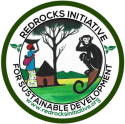
Furthermore, Rwanda tourism will be marketed in the East African Community (EAC) [comprising Burundi, Democratic Republic of Congo, Kenya, Rwanda, South Sudan, Tanzania, and Uganda] and will be added onto other itineraries with good tourism turnover, such as Kenya and Tanzania.
What we plan to do at Red Rocks is to equip our staff with the skills to improve their capacity, motivate them, and give them access to practical tools to help them apply their skills.
Poor governance in African tourism development
Shamiso nyajeka , lecturer, university of zimbabwe , zimbabwe.
While governance has become a buzzword in the current sustainability discourse, it is probably one of Africa’s long-standing challenges.

Poor governance has hampered our progress on multiple fronts and tourism has not been spared.
As countries emerge from the devastating impacts of the COVID-19 pandemic, tourism has been identified as a potential driver of economic recovery.
With the fast-approaching 2030 deadlines for achieving (i) the universal agenda of the sustainable development goals (SDGs) and (ii) the UNWTO Agenda for Africa 2030 — tourism for inclusive growth — the next five years are crucial in restoring the gains that were reversed by the pandemic.
Africa’s potential to attract tourists can hardly be doubted given the continent’s abundant tourism resources.
Attaining sustainability, inclusive growth, and resilience, on the other hand, is no mean feat, especially in the absence of good governance. Reaching these milestones largely depends on how destinations and their resources are governed.
Inconsistent policies, corruption, lack of transparency, political power struggles, and exclusion of local communities are critical threats to tourism development in Africa. Without significant improvements in governance, tourism’s envisaged role in steering the continent’s development will remain a fantasy.
Looking ahead to the next five years, our governments need to seriously consider getting back to the basics as far as governance is concerned. We must adopt home-grown solutions that have successfully sustained our traditional societies for centuries.
For us, the Bantu people (mostly occupying southern and eastern Africa), Ubuntu provides an ideal foundation for building good governance.
Embracing the philosophy’s principles, such as respect, fairness, empathy, community, and selflessness, can help to restore essential values for preserving our humaneness and repositioning the region on a more sustainable trajectory of tourism development.
COVID, war, inflation … What now for the Black Sea region?
Richard a shepard , trustee & ceo, sustainable rural development international , uk.
There is no single challenge, but climate change tops the list because it impacts everything else, including health.

Although the effects of COVID have declined, the 2022 travel recovery remained below pre-COVID levels and elevated health as a challenge for the sector.
The Russian invasion of Ukraine severely impacted our own Black Sea travel program, but it also has a worldwide effect; political instability, inflation, and an economic slowdown.
Rising energy and fuel prices and inflation contribute to higher travel prices and each are significant challenges.
I suggest it is nearly impossible to identify challenges beyond 2024 if for no other reason than we are bad at identifying them one year in advance.
For us, trying to think beyond 2023 and establish clear plans is difficult, at best.
So, what are our plans?
During the off-season we, together with our partners, will create more in-depth, extended experiences grounded in our commitment to sustainability.
To prepare for unforeseen crises we will create a robust risk management process to reduce uncertainties of actions, categorising risks — natural disasters, political issues, terrorism, health and economic crises — to inform business planning.
Coupled with continued commitment to the UN SDGs, we feel that sector threats can be significantly mitigated.
Finally, our overall objective is to address the needs of our customers — travellers and community stakeholders — with an emphasis on creativity, such as taking visitors on the trip before they ever get there with more visual content to help capture attention.
We will differentiate our form of sustainable tourism, explaining the benefits for our community partners to travellers.
Practically, our booking system process will be more flexible.
By keeping the interests of both customer groups at the forefront, we hope 2023 will see improvements in the quality of the offer and the traveller.
Social and economic stability in Niger
Issoufou adamou hassane , co-founder & president, tourism & local development (told) niger.
The major challenge for tourism in Niger over the next five years is the return of security to the country’s tourist destinations.

The main cause of the deterioration of the security situation in Niger stems from the lack of employment opportunities for women and young people, especially those living in rural areas.
The lack of jobs has made young people easy prey for criminal organisations, which rely on them to commit the most despicable acts that tarnish the image of the country among international tourist customers.
To meet this challenge, the NGO TOLD intends to implement initiatives to create jobs and contribute to social and economic stability in the country’s tourist destinations.
Our actions will focus on training local people on the preservation and enhancement of Niger’s natural and cultural heritage, the development of community cultural events, the economic empowerment of women in tourism, the creation of heritage clubs in schools, and the development of youth entrepreneurship in tourism and heritage.
Our vision is to ensure that people are better educated about their heritage in order to act positively for its preservation and promotion.
Such an approach will create jobs and wealth for the communities, promote the return of security, and contribute to the revival of sustainable tourism in Niger.
Success is a threat to Khao Sok, Thailand
Travis clark, general manager, anurak community lodge , thailand.
The greatest threat is not if tourism will return to pre-COVID levels but rather if/when it will destroy what makes places like Khao Sok, Thailand so special.

Khao Sok boasts one of the oldest and most scenic national parks in Thailand; beauty to escape to.
Big corporations have always had Khao Sok in their sights but have held off due to a lack of infrastructure in the area. Given the current state of tourism there is a real concern that they may enter the region regardless.
While larger businesses increase tourism, which seems like a net positive, however real estate development, highways, and retail outlets tend to come with them.
Each new development encroaches on the natural environment and the community atmosphere that make Khao Sok desirable.
In the 1970s, Patong in Phuket was a tropical beach paradise. Fifty years later it is laden with hotels, bars, restaurants, shops, stalls … The beach is an afterthought.

Khao Sok has managed to contain tourism to a handful of small businesses with roots in the destination. Whether Khao Sok is destined to fall into a pit of ‘success’ only time will tell.
To combat overdevelopment, hotels like ours are cooperating to spread awareness of how to operate sustainably.
Here at Anurak Lodge we work with global organisations like Travel Life to ensure that we meet minimum standards, as well as with local authorities and partners on developing a green zone and setting building standards.
We also pursue our own projects. For Rainforest Rising, for example, we replace invasive plants with indigenous flora.
Overall, tourism is good. It provides jobs and income for people. And we welcome growth and expansion if it is done sustainably.
The people and environment that attract tourists to Khao Sok need to be looked after. That responsibility starts with us.
‘Crossing the chasm’: Mainstreaming sustainability in tourism
Jonathon day , associate professor | graduate program director, white lodging — j.w. marriott, jr. school of hospitality and tourism management.
For an idea that has been around for over 50 years, and is appealing to policymakers, academics, and even businesspeople, sustainability still has a long way to go to become standard operating procedure.

The challenge of mainstreaming sustainability in tourism must be the priority today; and for the immediate future.
Researchers in the diffusion of technologies, policies, and business activities call this “crossing the chasm”. This term refers to the great leap required for an idea or technology to move beyond ‘earlier adopters’ and be embraced by the majority.
Even as we acknowledge there is still work to be done at every level of tourism — by destinations, by businesses and enterprises, and by travellers — I remain optimistic that we are further ahead on the journey than it first appears. A couple of reasons:
- Tourism is a complex system, and frequently members of the system are unaware of progress being made by other system members. As a result, there is a sense that anyone doing the work of sustainability is an outlier, forging a path that others have yet to follow. The evidence is mounting that this is no longer true.
- Sustainability requires more than completing a single task, but attention to a portfolio of activities. Some of those activities are more typically practised than others, but the truth is that sustainability practices are more common than they are given credit for.
One way we help “cross the chasm” is to show that social and environmental sustainability actions are not niche activities but common across the sector.
Failing to adopt sustainability means that you are the outlier, not the majority.
What do you think? Share your own thoughts in a comment below. Or write a deeper “GT” Insight . The “Good Tourism” Blog welcomes diversity of opinion and perspective about travel & tourism, because travel & tourism is everyone’s business.
Featured image (top of post): Tourism’s challenges and threats. Cobra image by P Schreiner (CC0) via Pixabay .
Related posts
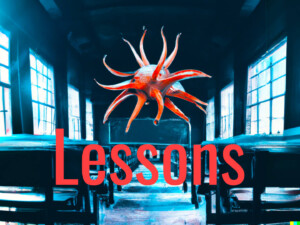
This site uses Akismet to reduce spam. Learn how your comment data is processed .
Privacy Overview

5 challenges Deloitte says faces the travel industry in 2023
by Kathakali Nandi
January 18, 2023 - Categories: Hotels: News, HotelsLife: News,
The travel industry saw performance and demand improving steadily throughout 2021 and 2022. As the pandemic conditions eased, pent-up leisure demand helped hotels and airlines recover some losses.
According to revealed Deloitte’s latest Travel Industry Outlook , hotels have been able to achieve rates and RevPAR above 2019 levels and U.S. air travel volume has reached at least 80% of 2019 levels every day from July 5 through November 30, 2022, driven by constrained capacity and increased fares. The report is based on Deloitte’s ongoing consumer research, including from Deloitte’s State of the Consumer Tracker.
Despite the recovery, the travel and tourism industry is expected to face new challenges in 2023, after years of pandemic-related setbacks, according to the study. Although health concerns have subsided, new pressures have emerged, including a labor shortage, concerns about climate change, and the possibility that corporate travel will never return to pre-pandemic levels.
“If 2022 was the year of welcomed pent-up demand, 2023 will be a year of coming to grips with some complicated realities facing travel. The year ahead in travel will be defined by the basics — product, performance and price — in the context of economies and societies reshaping themselves on the way of a once-in-a-generation crisis,” the study said.
Key findings of the report include:
- Leisure demand faces a murky outlook: After a prolonged steady rise, the intent to book travel was flat or down across all travel segments. YOY demand for leisure travel at the end of 2022 was flat YOY. After increasing in the summer, Americans’ desire to travel during the winter holidays has decreased. The September softening in demand could be the start of a long-term trend of consumer belt-tightening. The outlook for leisure travel in 2023 remains bleak, whether due to rising consumer financial concerns or simply a desire for many to avoid peak travel dates.
- Challenges in staffing and supply chain will undermine experience: The travel experience has been impacted, especially as companies struggle to keep up amid staffing shortages, technology issues and ongoing supply chain challenges. As travelers demand better experiences and prices remain high, these issues could begin to hurt overall business performance for the industry. While many travelers might opt to travel less or not at all, many are expected to adjust their trips, compromising their budget.
- Corporate’s new normal: Corporate travel will face cost-related challenges. With high airfares and many businesses finding growth harder to come by, there might be some expense-related curbing of trips. Corporate travel is expected to see major gains, primarily contributed by key corporate and industry events scheduled for the year. One-quarter (25%) of business travelers now point to conferences, exhibitions, or tradeshows as their primary reason for travel .
- Sustainability is important but has fewer options: Travelers are eager for more transparency through sustainability reporting, especially as 68% of consumers consider climate change an emergency. And travel suppliers do have sustainability much higher on their agendas than before, Deloitte found, creating opportunities to meet those demands.
- “Laptop lugging” trend will grow: The pandemic-induced shift in work patterns has allowed for greater flexibility in the workplace and among people. Approximately half of all employed Americans can work remotely, and the number of days they prefer to do so has increased (from 3.2 days per week in Nov. 2021 to 3.9 days in Nov. 2022). As a result, “laptop lugging” – the trend of leisure travelers extending trips due to the ability to work from anywhere – is expected to grow further, allowing travel providers to cater to this new market of travelers.
The weakening of financial confidence has threatened travel growth in the last few months of 2022, with the intent to travel becoming unsteady in September after a year and a half of steady growth.
Despite this, performance indicators in the hotel and airline industries have stayed strong. Overall, the travel sector is shifting to a year that will need repositioning and recalibration.
Comment Cancel
You must be logged in to post a comment.
Privacy Overview
Access this content free on hotelsmag.com by logging in or registering now.
Username or Email Address
Remember Me
Username can contain any letters or numbers, without spaces
Please provide your E-mail
Password should be at least 4 characters
Please confirm password
HOTELS News and Views
Hotels week in review, hotels magazine.
Home » Blog » A fast-changing world: The massive challenges facing international tourism
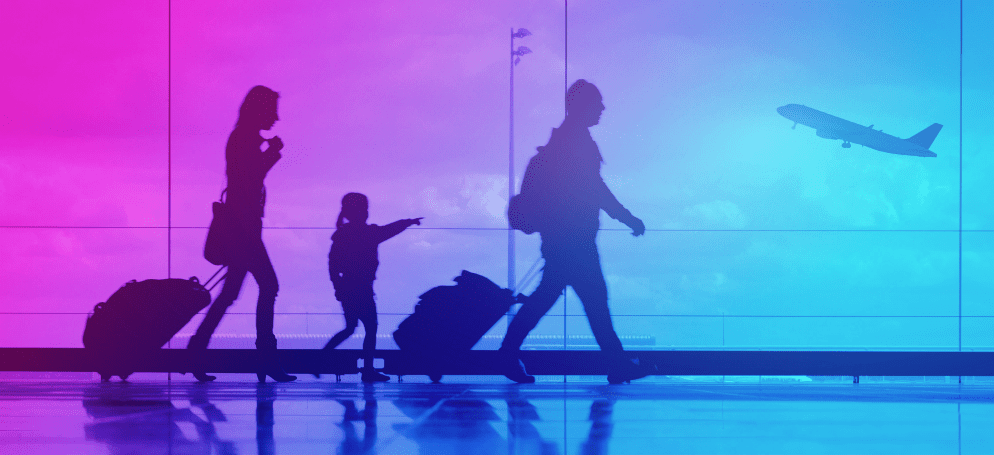
A fast-changing world: The massive challenges facing international tourism
Covid-19 disrupted most industries, but especially travel and tourism. In 2020, worldwide aviation passenger numbers dropped by 60% compared to the year before. 2021 saw some recovery, although numbers were still about half of 2019’s figures. After 9/11, it took six full years before airline passenger numbers returned to their pre-crisis peak.
The pandemic has changed consumer behaviour in ways which are still playing out. There is the possibility of new variants causing short-notice border restrictions in the future. Aside from Covid, international travel remains hampered by confusion, concern and unpredictability. Here, we look at the giant challenges facing travel and tourism in a fast-changing world.
Inflation and the rising costs of travel
2022 has seen increasing inflation around the world – in the UK, it’s currently 9.1%, which is the highest rate since 1982. Product shortages resulting from supply-chain disruption caused by Covid-19, high consumer demand driven by historically robust job growth, plus rising fuel prices partially caused by the war in Ukraine have created a perfect storm of increasing prices.
From a travel point of view, this means:
- Airfares are at record highs
- Lodging prices – for hotels and motels etc – are volatile
- Car rentals have seen big increases – as of May 2022, prices were around 70% higher than in May 2019
At the same time as rising prices, the economic backdrop – staff shortages and continued supply chain difficulties – means that service-providers often have to offer a reduced service. For example, many hotels are cutting back on amenities including daily housekeeping and room service . The Guardian recently labelled this phenomenon – of businesses simultaneously increasing their prices and reducing their service – as skimpflation .
Brands need to do this to protect their margins. But with a cost of living crisis, the risk is that skimpflation will deter leisure travellers from expensive vacations. There is also the potential for brand damage as well, if consumers don’t feel they have received value for money.
Short staffing affects ability to meet customer expectations
Many travel businesses laid off or lost staff during the pandemic – reportedly, a total of 62 million tourism-related jobs were lost worldwide in 2020. Now that leisure demand is building again, businesses have struggled to hire enough replacements. Short staffing explains the scenes of airport chaos we’ve seen, not just in the UK but around the world (although Europe seems to be the epicentre ). Once staff leave a sector – Deloitte reported 300,000 fewer hotel workers worldwide in October 2021 than two years previously – it can be hard to replace them.
As with rising prices caused by inflation, staff shortages make it harder to meet travellers’ expectations. The chaotic scenes at airports like Heathrow and Gatwick this summer went viral, acting as a possible deterrent for some travellers. Guests may be unwilling to accept a hotel’s housekeeping-by-request service if they are still paying full price.
In the short term, labour shortages are hard to address. Deloitte states that longer term, automation could help with some aspects of hotel services – for example, contactless check-in reducing the need for reception staff – but cleaning rooms and operating restaurants still requires human labour. If staff shortages persist – and there are indications that they may do – hotels may start to experiment with itemised charges for amenities such as housekeeping. As these once-standard parts of the hotel experience become unbundled, they could potentially form part of loyalty programmes.
Corporate travel’s slow return
Before the pandemic, about 20% of travel was work related. Business travellers accounted for about 12% of airline passengers but thanks to business class fares, typically generated twice as much money per person as non-business class passengers. A key question post-pandemic was the rate at which business travel would resume.
Whilst business travel has resumed to some extent, there are headwinds:
- CEOs and CFOs are likely to continue to scrutinise travel spend and ROI after operating successfully throughout the pandemic with fewer business trips.
- Businesses are under pressure to reduce their carbon footprint. Less travel means less emissions. Many companies are reviewing their business travel policies to support sustainability goals – this seems likely to result in reduced trip frequency, limits on long-haul travel, and more meetings online.
- Companies have learned in the last two years which meetings really do require face-to-face interaction, and which can be carried out successfully using video conferencing. Whilst trips to visit prospects and network at conferences will probably endure, it seems likely that routine or internal meetings and training will continue to rely heavily on virtual connection.
That said, the pandemic has contributed to a growing trend of ‘bleisure’ travel. This refers to travellers who mix business trips with leisure. Newly flexible work arrangements, including the opportunity for knowledge workers to work remotely, have created opportunities for extended travel, no longer limited by a Monday to Friday 9-til-5 workweek in the office – which leads us to…
Remote workers have created a new travel niche
The increase in remote working and digital nomads has created a new travel niche. With workers untethered from the office, they now have scope to work from other locations. These travellers have a particular set of attributes or requirements:
- Above average buying power
- Greater flexibility on travel dates
- A need for a quiet, comfortable space to work – perhaps away from crowded tourist areas
- Fast and reliable Wi-Fi
- Access to wellness-related amenities, such as gyms or healthy meals on the go
- The flexibility to reschedule leisure activities to accommodate work
This traveller niche might mean that subscription models – which have historically struggled due to low frequency of travel – may get a second look. For example, the Mandarin Oriental in Washington offers a service called MOBase , aimed squarely at travellers who blur the lines between work and leisure. This is available on a subscription basis, which can be shared within organisations. In the face of reduced corporate travel, higher-spending remote workers and their particular demands could attract more attention in the years ahead.
A trend towards short-term rental accommodation
Before the pandemic, there was a trend toward short-term rental accommodation as an alternative to hotels. The pandemic saw this trend accelerate – with health concerns being a major driver of demand. The greater space and privacy in an Airbnb-style apartment allows for more social distancing. Deloitte estimates that more than four in 10 rental travellers said they had been introduced to the accommodation type for the first time during the pandemic. Three-quarters say they plan to continue choosing rental accommodation even as the pandemic recedes.
The shift towards remote work and the rise of the ‘bleisure’ traveller seem likely to increase rentals’ popularity – as remote workers take longer trips and need space to work. In turn, increased interest in this accommodation type could push hotels to evolve their offerings per the Mandarin Oriental example above – for example, by offering home-like amenities such as kitchenettes, adjoining rooms and study areas.
Consumers are increasingly concerned about sustainability
According to Sustainable Travel International, tourism is responsible for about 8% of the world’s carbon emissions . Businesses are under pressure from both consumers and governments to become more sustainable. The tourism industry faces the challenge of adding decarbonisation to its value proposition. In practice, this means re-examining what travel should look like and how sustainable practices can be incorporated. This will require collaboration across the whole industry.
On a marketing level, as climate change and its effect on natural resources become more salient for travellers, sustainability will become a more dominant theme. Younger consumers in particular want to see businesses stand for something. In practice, this means:
- Businesses showing what steps they have taken to reduce their carbon footprint
- Businesses offering customers tools and information about what they can do on an individual level to make their travels more sustainable
- Countries and destinations playing up themes like conservation in their marketing
For example, Ryanair offers a carbon calculator on its website which allows customers to understand the carbon emissions of each flight, so they can offset if they so choose. Other travel brands taking positive action include:
- Hilton Hotels has installed energy-efficient lighting in all its buildings and will also be sourcing from local suppliers.
- Royal Caribbean’s ships have purification systems to remove 98% of sulphur dioxide emissions from their exhausts.
- British Airways is committed to cutting CO2 emissions in half by 2050 and is building a plant that produces fuel from household waste.
- Virgin Atlantic is partnering with manufacturers to create a jet fuel that will create 50% less carbon than fossil fuels.
The industry will need to look at the end-to-end travel journey – i.e. all touch points, not just air travel. The hope is that sustainable travel can be achieved without creating additional pain points for travellers.
Disasters – both man-made and natural – are an ever-present threat
As any tourism business knows – especially those with operations in major cities – security risks such as terrorist attacks or political unrest are a grim reality, alongside threats from natural disasters such as pandemics, tsunamis, earthquakes, floods, volcanoes, avalanches and so on. For example, last month TUI cancelled all holidays to Sri Lanka because of the ongoing political unrest and economic instability. This month, Sydney suffered its fourth major flood in two years, with the city receiving in one single weekend more rain than would typically fall in London in a year. The twenty first century is shaping up to be a volatile one.
Oban has a long track record of helping tourism and attraction businesses grow internationally. Previously, we have won Best Digital Marketing Campaign and Best Use of Search Engine Marketing at the UK’s prestigious Travolution Awards. To find out how we can help your travel business, please get in touch .
Oban International is the digital marketing agency specialising in international expansion. Our LIME (Local In-Market Expert) Network provides up to date cultural input and insights from over 80 markets around the world, helping clients realise the best marketing opportunities and avoid the costliest mistakes.
Subscribe to our international marketing newsletter
Stay on top of the latest international digital marketing trends with our newsletter – written in a concise style for time-poor marketers (and you can unsubscribe at any time).

Sustainability Leaders United
Achieving sustainable tourism: these are the key challenges.

The tourism industry has witnessed a sea of change in the past three years due to the pandemic and travel restrictions. While many of us hoped for a shift toward sustainable tourism on a massive scale, the industry continues to be plagued by problems. What are those challenges? How can destinations and businesses overcome them?
For those who are earnestly looking to start or transition into running a sustainable form of tourism, our panel of sustainable tourism specialists provides an excellent breakdown of the problems and what can be done to overcome them to achieve sustainability. Below are the answers (highlighted respondents are available as consultants or speakers ).
Some key takeaways of main challenges :
- Failing to acknowledge that every destination is different, with its own specific circumstances and priorities.
- Working in silos. Not understanding that sustainability is a collective journey that requires collaboration.
- Lack of political will – the switch to sustainability is not easy and even more difficult if local or regional public policy doesn’t support it.
- Using inadequate measures of success, such as merely the number of arrivals (which can lead to overconsumption).
- Not involving employees and supply chain adequately.
- Consequences of the Pandemic, especially the focus on quick earnings over a slow and sustainable tourism.
- A missing sense of urgency – e.g., while the climate has begun changing considerable, action is slow.
- No adequate measures in place to manage overcrowding now that tourism will bounce back.
- Greenwashing – not finding the right balance between touting one’s green credentials and exaggerating claims of sustainability.
- Lack of awareness – insufficient awareness among the tourism industry of the Sustainable Development Goals.

Brian Mullis
This topic is already well covered. In short, we need more purpose-driven businesses that are directly or indirectly involved in the visitor economy by applying commercial strategies to deliver tangible social and environmental impact. And we need more governments working across ministries and with all of the players in the tourism value chain (e.g., private sector, NGOs, communities, etc.) to unlock systems value.
Fiona Jeffery
It’s a vast subject, that’s often overwhelming with a lack of understood practical steps. Also, no environment is necessarily the same, so you are always trying, shaping and developing relevant and local solutions to ensure the right impacts.
Jonathon Day
Sustainability is a complex activity. It requires keeping many plates spinning at once. It is a commitment to a way of doing business – not just an easy add-on.
Kelly Bricker
- various demands by tourists (think supply chain)
- transportation-related issues
- organizational constraints (chains)
- human and financial resources
- growing population and number of travellers, overwhelming some systems
Vicky Smith
- Egos and associated values
- The pursuit of profit at the expense of others
- Want and greed over need
- A superiority to assume better
- An unwillingness to listen and learn from others
- An unwillingness to change because it’s harder work
- An inability to face harsh truths
- Self-interest
The human condition takes the path of least resistance (like other animals) and doesn’t want to be made to feel bad.
Aivar Ruukel
I think the main problem is the same old mindset and way of doing things. It is not helping if you pick new and better tools, but still have old aims, which are most often so simplistic as “more tourists, more turnover, more profit”. The challenge is to give up on the idea of endless growth within a limited planet. All tourism professionals should understand that tourism is not an industry but a living system. When changing the way we see ourselves and our sector, we can change everything else too.
Alexandra Pastollnigg
Black-and-white thinking; focusing on narrow KPIs without an appreciation of sustainability as a holistic concept and 2nd/3rd order consequences; conflicts of interest in senior business and political decision making/system failures; ego.
Ally Dragozet
A lack of local policies supporting sustainability, and the unavailability of sustainable products or services.

Amine Ahlafi
First, the mentality of managers and human resources in charge of the management of tourism activities and who should have updated training in sustainable development and its impact on business and on ecosystems. Secondly, the segmented approach of some decision-makers who have an interest in adopting a global vision and a holistic and sustainable approach.
The main challenges, therefore, remain awareness-raising, training and policies in favour of sustainability.
Anna Spenceley
I think a great deal of the challenges relates to a lack of awareness of what needs to be done to become more sustainable. This is further compounded when there is a need for skills, resources and effort.
A presentation I gave on this topic at a “Sustainable Tourism Training for Tomorrow”’ event, along with other contributions from notable speakers on the same topic, can be found here .
I’ve been privileged to work over the past 20 years with tourism businesses and destinations at the forefront of sustainability (see for example the book co-written with Sue Snyman ‘ Private sector tourism in conservation areas in Africa ‘)
Recognising the information challenges that are faced, I recently published a book that aims to help transfer more knowledge to tourism businesses and destinations, and help improve their successes: the “Handbook for Sustainable Tourism Practitioners: The Essential Toolbox”.
The handbook is divided into four main parts that address different elements of sustainable tourism planning, operation and evaluation. It contains 27 chapters providing insightful detail into key sustainable tourism issues. The authors share step-by-step approaches to practical problems – such as how to write bankable financial proposals – how to consult with stakeholders – and how to manage visitors.
The book transfers knowledge from the academic realm, and from extensive practitioner experience, into one essential 550-page volume. It’s available in e-book and hardback here .
Anne de Jong
When they do it because they feel it will make more money or if they feel it’s something they need to do because it’s the right thing. And even though the latter is important, in the end, they do have a business to run. So, they need to find a way where sustainability fits into their business and actually makes them better. Creating a situation where sustainability is fully integrated into the business and not something on the side.
Antonio Abreu
Lack of vision and weak understanding of the role that sustainability should play in the business. Too often see the action without a solid background, which leads to a certain agitation without effective change. We often listen to people saying that they know, do, and they are champions, but, in reality, they have no clue about it.
The tourism sector is very resistant to accepting the need to include other professionals and other skills. This is the case when it comes to environmental issues. Hotel managers, for instance, tend to consider that anyone in the organisation is able to assume professional and technical roles instead of recruiting qualified people. For the restaurant, they want the best chef, but for handling environmental issues, anyone can do it. It is a basic mistake that we see every day everywhere.
Antonis Petropoulos
In terms of businesses, lack of real commitment to sustainable principles (such as the SDGs ) on the part of management and employees along with a lack of training. Destinations will fail to reach sustainability goals if they:
- lack a critical mass of sustainable tourism businesses
- if they do not have a competent DMO that can coordinate these businesses and
- if public tourism policy is only paying lip service to sustainability, permanently fixated on arrival numbers and expenditure per head
Audrey Scott
Sustainability should be thought of as a long journey that will likely last forever. New approaches, technologies and ecological realities are ever-changing. However, many tourism businesses/destinations won’t know where to actually start and they can get overwhelmed by the complexity of criteria/certifications and feel that sustainability is “all or nothing.” Many businesses think that it’s too expensive and still too niche to be profitable.
Beatriz Barreal
At least in Latin America, the main pitfalls are corruption, greenwashing, and short-term vision. The main challenge is in raising the awareness and the lack of action towards the sustainability of this world, which affects all of us, where we live and where we travel to.
Christian Baumgartner
Convincing the decision-makers involved to think regionally instead of operationally, long-term instead of in terms of investment periods, and complex instead of one-dimensional – and then to act accordingly. Not to shift the responsibility and wait for consumers to express the desire for more sustainability.
Christof Burgbacher
Too often it is decided from top to bottom what the sustainable orientation of a company or destination should look like. However, the participation of employees, the local population, guests and other partners is crucial, as they ultimately have to accept and implement the measures. If a participation process is designed correctly, it can also generate many ideas and creative approaches.
Darrell Wade
Self-interest is the primary one. People consider their own needs, but don’t recognise those of others or the impacts of their own actions. By not considering externalities you are inherently creating a short-term business that will not have sustainability in any sense.
Elisa Spampinato
The main pitfalls that can prevent tourism businesses from success are forgetting that sustainability is a collective journey and, therefore, separating the actions of the actors involved.
Another big pitfall is considering the different dimensions of sustainability as disconnected areas that need segmented interventions and focuses.
They should be highlighted and understood as different areas of intervention, however, on the practical level they should be unified, and a specific effort should be made, at the destination level, to create solutions that can include more than one dimension. And above all, the local communities should be active in the process.
Also, I am among those people that think that we cannot work on environmental, social, economic, and cultural dimensions if we do not include an additional one to the equation: the political.
This means that the political institutions should continue the journey towards sustainability beyond the limitation of the mandate and the people that initiate those specific actions. Sustainability should be understood as a collective journey through generations, driven in a consistent way, whose direction should be dictated exclusively by the destination’s circumstances and contextual priorities.
Regarding challenges, there are big economic interests involved in the tourism business and a huge disparity of power in its management. In fact, most of the people that directly feel the impact of tourism has no part or voice in shaping the industry.
However, there are encouraging examples of innovative government, like the municipality of Barcelona, which show that new solutions to the democratization of the process can be found.
Seems that local governments are finding new ways to really listen and include the local community voices.
While the technology factor can be an important ally for the urban communities, a way is yet to be found to include the voices of the traditional, indigenous, and ancestral rural communities left out of the loop and mostly left alone to face the consequence of deregulated tourism activities and the effects of the climate change.
Therefore, the main challenges we face are changing the balance of power and opening up spaces to new stakeholders who could greatly contribute to sustainability if only they were given more space in the decision-making process.
Elizabeth Becker
Convincing governments at all levels to enact and enforce rules for sustainable tourism.
Erik van Dijk
Sustainable tourism is not expensive as people think. Bring the right balance between hospitality and sustainability.
Frankie Hobro
In the past, there hasn’t been much encouragement for tourism to be sustainable but fortunately, I think that is changing now with consumer pressure and expectations in an evolving market. And also with the new generation showing genuine concern over their future on our planet and how our everyday actions contribute to it.
I think many businesses are concerned about viability as a sustainable operation can require a lot of short-term investment with little immediate return and some businesses cannot survive long enough to benefit from the long-term gains when faced with non-sustainable competition. A lack of support for ‘green development’ and funding contributes to this problem as the sustainable option often costs more than the quickest and easiest option.
More successful sustainability trailblazers are needed to encourage and support those who want to follow suit, lead by example and show that it is worth taking the risks and that it can succeed.
Gianna Moscardo
Tourism has two features that make sustainability a challenge.
It occurs across so many different sectors and spaces that a lot of tourism is conducted without any one organization in charge of it. Let’s take the example of Stag parties in a European city with young drunk men behaving badly in public spaces and damaging those spaces – who is responsible for them?
- The places they stay (no because they have no control over the public spaces)
- The airlines that bring them to the city (again no)
- The bars that served them (maybe a little bit)
- The DMO who didn’t encourage them to come and often don’t know there is a problem until it is a major problem
- The international tour operator who has no connection to the destination but organises the package (maybe morally but legally none at all)
That latter example is the second sustainability challenge – a large chunk of tourism is organized by businesses who have no connection to, or interest (other than financial gain) in the destinations that they send tourists to and make money from. They have no incentives to behave well and bear very little in the way of negative consequences if they behave badly. Not all businesses in this sector behave badly but enough do to create problems.
Glenn Jampol
There is one overriding essential component to “sustainable tourism” and that is financial sustainability. Without a profit, your business cannot survive and therefore the possibility to do good is erased. So, all tourism businesses- whether regenerative or conventional -must first and foremost create viable and researched business platforms and seek to understand who their clients are and who they will be.
New small-scale tourism businesses usually function on a thread of support both financially and experientially and are often family-owned and operated. They frequently have little or no real experience in how to manage and grow a tourism company and usually spend too much time in the tourism world learning curve while sacrificing the opportunity to enjoy the best part of owning one of these businesses: the innovative idea-driven projects that not only help to create a fresh approach but also a niche for new and hopefully loyal clients.
Greg Bakunzi
One of the main challenges is the mindset of the community, where the tourism products are offered, the other one is the tourist visiting the area, without responsible, I mean respecting the culture and the people they are visiting.
James Crockett
Getting caught up in how to look good, virtue signalling and a desire to be seen to do good. The most important stuff happens behind the scenes with no one watching, yes there are some great inclusive components which need a song and dance to promote and spread the word to generate buy-in but it is not the starting point.
Joanna Van Gruisen
Competition and profit lead to overtourism. However sustainable the operation of a tourist company is, its very success can invite others who may not entirely share the same sustainable philosophy. Nothing can kill a destination faster than overtourism. Competition can lead to price wars too which can compromise sustainability. At a village level, this can be avoided by tourism operating with community, not individual, benefits, in a wider context, it is harder to avoid without government intervention and support/regulations.
Jonathan Tourtellot
Regarding destinations:
Using wrong or incomplete measures of success, such as the number of arrivals; ignoring local opinions and desires (or heeding only local desires); inability to counter the power of large corporations (e.g. cruise lines); short-term government thinking and quick-buck solutions; proclivity of donor agencies to fund infrastructure over human capacity development; siloed thinking at the destination level.
Jorge Moller Rivas
Wrong public policy without involving the community.
Lisa Choegyal
Especially in the extreme economic and social suffering post-COVID in many destinations, when tourism returns it will be tempting to cut corners in the desperation to survive and succumb to market forces. We are already seeing this in unsustainable under-cutting and price slashing, for example. Many operations have been forced to lay off staff without pay, causing enormous hardship and threatening the quality of the product once visitors return. The challenge will be to stick to your sustainable tourism principles.
Mariana Madureira
Pitfall – being shallow, superficial or irrelevant. Eg. a hotel communicating not to wash towels frequently.
Challenge – go deeper, and think of business as a tool to create value for society. Rethink business model and relation with stakeholders.
Marcus Cotton
Nothing can prevent individual businesses from doing more to be sustainable. Only it takes leadership by owners of the business to motivate and inspire change commitment among employees. Fear of failure is the biggest constraint coupled with the human approach of being comfortable with the status quo. Sustainability is a journey, not a destination (a glib definition!) and that ongoing process can put people off.
Marta Mills
The biggest challenges are:
- lack of understanding of what sustainable travel means and why it is important
- lack of awareness
- the short-sightedness of people who want a quick financial gain
- lack of political will, but that comes mostly from the lack of awareness and understanding
Megan Epler Wood
This is a very complex question, but I would say this – we need to change governance and decision-making procedures. Our leadership institutions are still mainly driven by growth.
Mike McHugo
Having a united vision and making sure investors (which one may or may not need) have the same vision.
Natalia Naranjo Ramos
Implementing sustainability requires a coordinated approach to face the challenges and the potential negative impacts of tourism activities.
Paul Peeters
The main pitfall is believing in ineffective ‘solutions’ like offsetting emissions, battery aircraft, and bio-fuels, trying to weigh economics and social aspects against existential issues like climate change and biodiversity. The latter is not possible and means that for relatively vague reasons (losing jobs, while there are many ways to generate labour) to lose the earth systems that are essential for the survival of humans.
Challenges are: get away from the over-valuation of distance, international travel, air travel and back to the essence of being from home even if a short distance. Also focusing on policy-making is essential to make all elements of tourism, but particularly flying, zero emissions by 2050. If that is technically unsuccessful, it should be clear that aviation will be reduced to a small sector.
Peter Richards
There are so many.
Internally: Greed, weak understanding of ‘why?’, weak leadership, lack of prioritising and giving time, lack of resourcing (either intentionally or unintentionally) lack of motivating and encouraging staff, lack of good management systems to systematise and scale-up impacts.
Externally: weak government support, corruption undermining competitive environments, weak demand by customers, lack of access to modern technologies at a reasonable price.
Rachel Dodds
There are many:
- the focus on numbers, rather than yield
- the fact our political cycles are often 3-5 years but real change takes 10-20
- that all stakeholders are not equal in terms of power
- the political will to change is lacking
- humans have short memories and so make the same mistakes over and over and those that want change are often not in control of the things that need to change
Rebecca Hawkins
Depends on the business/destination. Sometimes belief, passion, and the quest for growth at any cost. Very occasionally it is downright irresponsibility. More often than not it is a combination of conflicting priorities (e.g. between service standards and sustainability criteria), bonkers business models (that separate property ownership from management), perverse incentives (that reward consumption rather than conservation) and a firmly held belief that if the customer wants it we as a service industry have to provide it.
Digital marketing under the social influence has enormous potential to cause overtourism which can not be sustainable anymore. For instance, when destinations are using their unique mountain lake for a destination campaign, “Instagram” travellers perhaps flood the spot. Nature and locals have to pay the price for the mass invasion.
Richard Butler
The fact that the majority of tourists and many operators and governments are not prepared to adapt their behaviour/operation to the extent it would be needed to become truly sustainable.
Richard Hammond
Separating the green from the greenwash.
Shannon Guihan
Understanding. While we carry on debating the best term or definition to use, our industry, which is largely SMEs, must engage in action. However, the concept of ‘sustainability’ is daunting, and so many businesses remain uncertain about where to begin. This, in my opinion, is a massive issue. Those of us engaged must offer our resources and approaches – we must help businesses to determine the scope and supporting tactics, rather than intimidate them from joining the effort.
Shannon Stowell
Right now the economic realities of a recovering world will be a real setback for many. Some headway was being made with single-use plastics for instance and this area seems to be regressing because of COVID.
Also, there is no sense of real urgency for the environment or climate with the general public. Until the public understands and believes the seriousness of the situation, it feels like we’ll spin our wheels in many situations.
Shivya Nath
- Business models prioritize volume over all else, ignoring planetary boundaries.
- Sustainability as a niche, rather than a norm.
- Placing the burden of choosing sustainable travel on the consumer.
Sonja Gottlebe
Economic sustainability is essential to be able to lead activities. The pandemic has shown the limits and fragility of tourism all over the world. The wide supply chain is suffering from this crisis.
In poor countries like Madagascar, it’s impacting the well-being of communities directly, lemurs are hunted for meat, and forests are burnt down for charcoal! Without a vision for the future, without a vaccination plan, the biggest challenge will be for travel. to bounce back!
Willem Niemeijer
Greenwashing, even if it’s done unwittingly, needs to be rooted out. Third-party certification can help avoid this trap that gives the industry a bad name. Developing destinations also need to ensure that foreign investments benefit the local community while protecting the interests of the investor.
Xavier Font
The urgent get in the way of the important. We aim to reap short-term benefits without being aware of the long-term consequences of our actions. And too much selfishness.
More about the sustainable tourism expert panel here – including previous sessions and answers to some of the most pressing issues linked to making tourism more sustainable.
- by Editorial Team

Beyond Greenwashing: Experts Weigh in on the Realities and Opportunities of Sustainable Tourism

Most Inspiring Sustainable Tourism Champions to Follow in 2023

Sustainable Tourism Development: Key Trends and Priorities in 2023

Innovation for Tourism Sustainability: Challenges to Overcome

Innovation for Tourism Sustainability: Priorities & Opportunities

Innovation for Tourism Sustainability: Examples and Solutions

Sustainable Tourism 2022 and Beyond: These Are the Keys to Success

Career Choice: Why Focus on Tourism and Sustainability?

What Characterizes a Sustainability Leader in Tourism?

Sustainable, Responsible, Transformative, or Regenerative Tourism: Where Is the Difference?
Privacy Overview
For your kind of donation, search hotels and more, destination, check-in date, check-out date.

Email: [email protected]
Challenges and Opportunities for the tourism sector in 2021

The COVID-19 crisis has brought uncertainty to many sectors that are currently unable to calculate forecasts for 2021. One of the sectors most affected by this reality is tourism , which, with its vulnerable nature, is facing trouble forecasting its future for the upcoming months of 2021, considering the difficulties it faced during 2020.
The tourism sector is one of the most potent industries worldwide. It faces various challenges in terms of security, communication, marketing, and digitization, among others. Likewise, its role as a generator of jobs is admirable, with most of the work being done by micro, small and medium-sized enterprises.
The decisions that will have to be taken for the 2021 summer season will be drastic but decisive for maintaining tourism as one of the world economy engines behind industries such as chemicals. What is vital for this period is that the decisions to be taken are rational and based on the relevant information to date. The following is an analysis of the significant challenges and opportunities that tourism will encounter this new year and to which it must adapt.
The post-covid environment has transformed tourists, looking for more detailed factors such as health, social distancing, comfort, and services offered to enjoy their vacations. This extra demand poses a significant challenge for the tourism sector, which will have to invest capital in guaranteeing sanitary measures to avoid infection and the pandemic’s spread.
Along with the guarantee of security and peace of mind, technology has made its way among the most critical challenges that the tourism sector must face during 2021 . Incorporating new technology has made it easier for hoteliers to adapt to the new reality and create jobs in the industry. Looking ahead to the 2021 summer period, companies and players in the tourism sector will have to make decisions and modifications focused on the work protocol , adaptability to new technology, and one more extra element, creativity.
Creativity will be what will make a difference in the tourism sector in 2021 . Although broad and complex, this concept is, after the covid-19 pandemic, one of the most relevant ideas that tourists take into account when planning their vacations. It seeks to break with the monotony and the feeling of confinement experienced during the past year, so one of the biggest challenges tourism will face in 2021 comprises how we materialize our service through the different platforms and websites.
The tourism sector must be able to take their future visitors on a trip before even getting there ; for this, they must take advantage of the challenge that digitalization and creativity introduced. We must embark on a new “brand building” that allows us to improve our image and have a closer treatment for the customer through the screen before they arrive at their destination.
In this line, sustainability, flexibility in booking, cancellation policies, and the differentiation of the type of tourism we offer will allow the hotelier and tourist sector to capture the public’s attention.
Although 2020 was presented as a complicated year for all sectors, especially for the tourism sector, 2021 allows us to reinvent ourselves and prepare for any adversity. This sector has a lot at stake facing the summer period of 2021, but adapting to the health reality and guaranteeing safety and disconnection will make any destination of great relevance and interest for tourists.
If you would like to know more, please contact:
Ana María Martín | From our Brussels team
Serendipia Newsletter
Where are we
Spain Portugal Brussels Argentina Bolivia Brazil Chile Colombia Ecuador Dominican republic Mexico Miami Panama Paraguay Peru
C/ Arturo Soria, 99
28043 - Madrid
Tel. (+34) 91 564 07 25
Trav. de les Corts, 55
08028 - Barcelona
Tel. (+34) 93 419 06 30
C/Cirilo Amorós, 68
46004 - Valencia
Tel. (+34) 96 394 33 14
Avenida de Buenos Aires, 5-6
15004 - A Coruña
Tel. (+34) 881 255 363
Avda. da Liberdade, 157
1250-141 - Lisbon
Tel. (+351) 213 240 227
Rua de Costa Cabral, 777 A
4200-212 - Porto
Tel. (+351) 933 461 279 / (+351) 92 672 82 92
Rue de Trèves 49-51 à 1040
Etterbeek - Brussels
Tel. (+32) 2511 6527
Buenos Aires
Ciudad Autónoma de Buenos Aires - CAPITAL FEDERAL
Santa Cruz - Bolivia
Tel. (+591) 67155444
Av. Ibirapuera, 2120, Cjto. 134
Sao Paulo – Brasil
Tel. (+55) 11 000718080
Alcantara 200 304
Las Condes Santiago - Chile
Tel. Las Condes Santiago - Chile
Cra 15 # 88-21. Torre Unika Virrey. Oficina 602
Bogota - Colombia
Tel. (+57) 3506614527
Avda. Amazonas 3123 y Azuay. Edificio Copladi. Piso 8
Quito - Ecuador
Tel. (+593) 987164389
Edificio Sky Building. Oficina 423
Ciudadela Bahía Norte Mz 57 - Guayaquil
Santo Domingo
Regus Santo Domingo. Roble Corporate Center. Planta 7
Rafael Auusto Sánchez 86, Piantini – Santo Domingo
Mexico City
Enrique Wallon 414. Piso 2. Col. Polanco V sección, Alc. Miguel Hidalgo
11580 - Mexico City
Tel. (+52) 55 5922 4262
Brickell Key Drive 602
FL 33131 - Miami
Banistmo Tower. Planta 10. Aquilinio de la Guardia St.
Marbella - Panama
Capitán Solano Escobar 294
Asunción - Paraguay
Av. Camino Real Nº456 Oficina 1003-1004
Torre Real, San Isidro - Lima
Tel. (+51) 652-2422

S.F.’s biggest hotels face another challenge amid slow tourism recovery: Expiring labor contracts
S an Francisco’s critical tourism industry has grappled with a slow recovery from the pandemic fueled by a slew of challenges: remote work decreasing business travel, a lag in the return of high-spending Chinese tourists and public safety concerns.
Now a new challenge is emerging: labor unrest.
On Wednesday, hotel union workers from Unite Here Local 2 plan to protest in Union Square for better wages and benefits in advance of expiring contracts. Similar events will be held around the country.
In August, contracts expire at 55 Bay Area hotels that collectively employ around 10,000 workers. They include some of San Francisco’s biggest properties: the Fairmont, St. Regis, Marriott Marquis, Westin St. Francis and Palace Hotel, as well as Hilton Union Square and Parc 55, which were given up by owner Park Hotels & Resorts last year after business struggles.
Elizabeth Tapia, president of Unite Here Local 2, said contract negotiations have yet to start, but the union wants higher wages and better benefits.
She said hours have been cut by hotels, including as a result of offering less housecleaning to guests. Many hotel restaurants remain closed as well, she said. Nationwide, staffing is down 13% from 2019, she said.
“Staffing is much lower than it was before,” she said. “The hotels have really tried to eliminate room cleaning.”
More than 20 other cities, including San Jose, Sacramento, San Diego, Honolulu, Boston, Miami and Washington, D.C., also have protests planned on Wednesday amid impending contract expirations.
Past labor disputes have led to major disruptions. In 2018, stalled contract negotiations led to a two-month strike at San Francisco Marriott hotels — at a time when the city’s tourism was near record highs. San Francisco Travel, the city tourism bureau, doesn’t expect a full recovery in visitors and spending until early 2027. Last year, Los Angeles hotel workers also went on strike before coming to contract agreements.
One major hotel operator said it would work productively with Unite Here Local 2.
“Hyatt has a long history of cooperation with the unions that represent our employees, including Unite Here Local 2,” Michael D’Angelo, Hyatt head of labor relations in the Americas, said in a statement. He said, under past agreements, “Hyatt hotels continue to offer our eligible employees competitive wages and benefits, as well as comprehensive healthcare coverage. We look forward to negotiating a fair contract with Unite Here Local 2 later this year.”
Marriott and Hilton didn’t respond to requests for comment.
Antonia Beltran, a Unite Here Local 2 member and dishwasher and food service worker at the Hyatt Regency, plans to join the protest this week.
Beltran said she is overworked after her department was reduced from eight staff members to four. She has a second part-time job selling cookware on commission, to help support her two children.
Beltran said she makes $29 per hour and has received only a $1 per hour raise in the past three years. Overall, Unite Here Local 2 said its members make between $18 per hour for tipped servers to $30 for cooks.
“In San Francisco, everything is so expensive — food, gas, mortgage,” Beltran said. “It’s a lot of frustration.”
Hotel operators will face labor negotiations at a time when many haven’t recovered from pandemic disruptions. In February, San Francisco hotel revenue was only 65% of pre-pandemic levels, in contrast to cities like San Diego and New York where revenue now exceeds 2019 levels, according to hotel data firm STR.
“The landscape of the industry is such that interest rates are very high, the cost of business has gone up a lot. Inflation has affected everyone, the businesses and workers alike,” said Alex Bastian, CEO of the Hotel Council of San Francisco, which represents hotel owners but is not involved in any contract negotiations.
“We have less visitors,” he said. “We are in a very challenged place. We have to find a way to all work together.”
San Francisco saw 23.1 million visitors in 2023, up 5.2% from the prior year but still down 3 million people from 2019 , according to San Francisco Travel.
Spending was $8.8 billion in 2023, up 18% from 2022 but down 8% from 2019.
There are fewer convention bookings expected this year, after some events have moved out of the city. San Francisco Travel also cited the inability to sell bookings for two years during the pandemic for the drop-off.
Reach Roland Li: [email protected]; Twitter: @rolandlisf

- Asset Management
- Cash Management
- Customer Management
- General Ledger (Record to Report)
- HRMS & Payroll
- Manufacturing Processes
- Order to Cash
- Procure to Pay
- Plan to Perform (Projects)
- Tax & Compliance
- Treasury Management
- Warehouse Management
- Aerospace Industry
- Automotive Industry
- Banking Domain
- BFSI Industry
- Consumer/ FMCG Industry
- Chemicals Industry
- Engineering & Construction
- Energy Industry
- Education Domain
- Finance Domain
- Hospitality Domain
- Healthcare Industry
- Insurance Domain
- Retail Industry
- Travel and Tourism Domain
- Telecom Industry
- Change Management
- Communication Skills
- Creativity Tools
- Career Management
- Decision Making
- Leadership & Management
- Problem Solving
- Project Leadership
- Strategy Tools
- Stress Management
- Team Leadership
- Time Management
- Leadership Theories
- Leadership Styles
- Domain Knowledge
Challenges in the Tourism Industry

Top challenges confronting tourism are taxation, travel marketing, infrastructure issues, and security and cross border regulations. Too many tourism destinations are not prepared for visitors. Tourists or travelers can at times deem travel marketing to be exaggerated. Another major challenge that the tourism industry faces is the fluctuating rates and cost inflation. New challenges seem to arise quickly impacting the industry as a whole.
What is coming to tourism? What will the tourist sector have in the coming years? It is the question that all professionals in the travel industry would like to have answered. Let’s look at some of the challenges faced by the travel industry and what the future looks like.
Impact of Coronavirus on Global Tourism
The coronavirus health crisis has hit the global economy hard and the tourism industry most of all. The World Tourism Organization (WTO) is expecting a drop in tourism revenue of 300 to 500 billion dollars in 2020, up to one-third of the 1,500 billion generated in 2019. Although the coronavirus crisis has short-term destructive effects on the tourism industry, it is challenging the practices of the tourism industry and is drawing attention to a succession of issues like poor risk management in the travel industry, viral globalization, and travel of diseases with tourists to cross borders. This is also an opportunity to rethink the tourism industry from a critical perspective. There are several areas for potential transformation and move towards responsible, sustainable, and socially innovative tourism.
Cost of Vacation & Inflation
One of the major challenges that the tourism industry faces is the fluctuations in currency exchange rates. The inability to know the value of a currency means that long-range tourism prices are especially hard to predict and the fallout from this monetary instability is already impacting multiple tourism support systems. The tourism industry is seasonal in nature and does not guarantee round the year flow of income which hampers the overall business setup.
Inflation is rising at an alarming and restaurants have had to raise prices or lower their service. Transportation companies have been hard hit. The airline industry is especially vulnerable. Airlines depend on both the food industry and the fuel industry. Already on the margin, airlines can do nothing more than cut services and raise prices. The result of such a situation keeps the leisure travelers stay away from expensive vacations which further hits the overall tourism sector.
Tax and Tourism
The tourism industry is a heavily taxed sector in some countries. Various taxes are levied across the entire industry right from tour operators, transporters, and airline industry to hotels and these include service tax, luxury tax, tax on transportation, tax on aviation fuel, and various taxes on transportation. In addition, these tax rates tend to vary across different states in the country. All these taxes are finally passed on to the travelers in one or the other way thus hampering its growth.
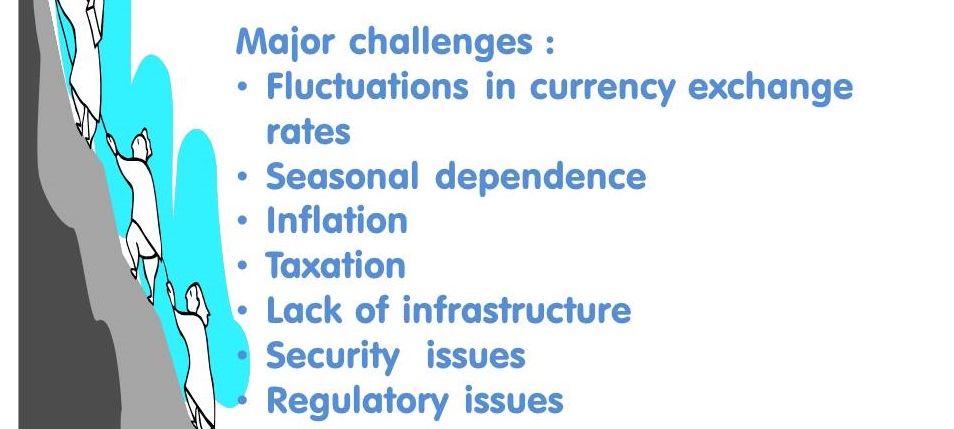
Risk & Security of Tourists
Safety will always be a paramount consideration for the traveler. Security has been a major problem as well for the growth of tourism for a number of years. Improper law and order, terrorist attacks, political unrest adversely affect the sentiments of foreign tourists. Despite the economic growth, tourism is vulnerable to natural and man-made crises, unexpected events that affect traveler confidence in a tourist destination, whether the risk is real or perceived.
Already the events of the twenty-first century have tended to focus attention on security risks to travel associated with terrorism and political groups. Tourism is also affected also by natural disasters such as pandemics, tsunami, earthquakes, floods, volcanoes, and avalanches. A crisis can be defined as any unexpected event that affects traveler confidence in a destination and interferes with the ability to operate normally.
Regulatory & Border Issues
Regulatory issues like visa procedures are seen as hindrances. Difficult visa processes keep the tourists away from some destinations. A number of projects in the tourism infrastructure segment and in the hotel industry are delayed due to non-attainment of licenses and approvals on time.
However, in order to capitalize on the benefits of the tourism sector, the government should aim at creating proper infrastructure, speedy clearances, and make effective policies to regulate the tourism sector and to gain the confidence of foreign tourists.
Technological Drivers of Change
Technology is fast penetrating into all aspects of life. Tourism futures will be determined and facilitated by technology. The Internet has leveled the playing field for tourism marketing. A good website means that small remote destinations can compete equally with the giants of tourism. The fusion of information and communication technologies will allow tourism enterprises to become more efficient and competitive.
Skilled Human Resources
The challenges facing the tourism sector will only be met successfully only by a well-educated, well-trained, bright, energetic, multilingual, and entrepreneurial workforce who understands the nature of tourism and have professional training. High quality of professional human resources in tourism will allow enterprises to gain a competitive edge and deliver added value with their service.
A high-quality tourism workforce can only be achieved through high standards of contemporary tourism education and training. Tourism education and training involve the communication of knowledge, concepts, and techniques that are specific to the field of tourism, but which draw upon the core disciplines and themes of areas such as geography, finance, and marketing.
The futures of tourism are exciting and tourism is a difficult sector to predict. Each of the drivers of the future that we have outlined above is influential in its own right, but when combined they deliver a powerful force shaping the futures of tourism.
Related Links
You may also like.

Social & Cultural Impact of Tourism
Tourism may have different effects on the social and cultural aspects of life in a particular region depending on the strengths of the region. The effect can be positive or negative. Tours also focus on unique natural or geographical features like the coastline, islands, mountains, health resorts, countryside, etc. At such locations, the provision of tourist services and the pressure of tourists are bound to have impacts on the environment, economy, and local social practices and on the people.

What is Travel & Tourism
We all travel and have been a tourist, perhaps many times in our life. Tourism and tourist are so common words that they find mention in newspapers and magazines almost on a daily basis. In spite of its popularity, have you ever deliberated what the definition of travel and tourism is? What components constitute the tourism industry? Who qualifies to be called a tourist? Well, this article attempts to explore the words "travel”, “tourism” and "tourist'- both technically as well as conceptually.

Components of Tourism Industry
The tourism sector is a range of businesses and organizations involved in delivering the tourism product. All the elements of tourism are related and interact; in essence, the tourism industry is a system of customers and suppliers who demand and supply tourism products and services. In relation to tourism, very often you will come across terms like tourism products and services. These components of travel and tourism can be broadly divided into six key areas highlighted below.
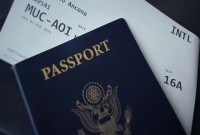
Types of Tourists
Wealthy people have always traveled to distant parts of the world, to see great buildings, works of art, learn new languages, and experience new cultures, and to taste different cuisines. There has been an up-trend in tourism over the last few decades and now national or international travel for short breaks is very common. Tourists have a wide range of budgets and tastes, and a wide variety of resorts and hotels have been developed to cater for them.

Environmental Impact of Tourism Industry
The environment is the surrounding atmosphere or condition for existence. The impact of tourism on the environment is both positive and negative. This article considers the major issue of the consequences of tourism for the environment. This is a complex area as, whilst tourism is dependent upon environmental quality to attract and support visitors, it also can have a detrimental effect upon those very environments – and their climate.

Impact of Tourism Industry
How does Tourism Industry impact a country? The impact of the tourism industry can be classified into the social & cultural impact, economic impact, and environmental impact. Social & cultural impact signifies the impact which it creates in terms of social changes. The economic impact can be quantified in terms of monetary benefits and overall economic development of the society. Environmental impact refers to the impact on nature and the surrounding areas.

Economic Impact of Tourism Industry
The tourism industry has contributed to the economic growth of a country through factors like industrialization, education, advanced technology, a higher number of qualified professionals, opening up of foreign markets, liberal trade policies, and better advertising and strategic marketing. The income generated helps the national balance of payments, earning revenue through direct taxation, as well as from indirect taxes on goods and services purchased by the tourists.

Overview of Hospitality Industry
Hospitality is the act of kindness in welcoming and looking after the basic needs of customers. The hospitality industry is a broad group of businesses that provide services to customers. The industry can be broken down into three basic areas: accommodations, food and beverage, and travel and tourism. Hospitality is actually one facet of the service industry. It primarily involves addressing customer satisfaction and catering to the needs of guests.
Explore Our Free Training Articles or Sign Up to Start With Our eLearning Courses
- Emerging Technology
Subscribe to Our Newsletter
© 2023 TechnoFunc, All Rights Reserved
ORIGINAL RESEARCH article
This article is part of the research topic.
The Potentials and Pitfalls from National Blue Economy Plans Towards Sustainable Development
Local Perspectives on Marine Ecotourism Development in a Water-Insecure Island Region: The Case of Bocas del Toro, Panama Provisionally Accepted

- 1 Dalhousie University, Canada
- 2 Center for Tropical Island Biodiversity Studies, School for Field Studies, Panama
The final, formatted version of the article will be published soon.
As a dimension of a blue economy, marine ecotourism should, in theory, not only increase economic viability and environmental sustainability but, most importantly, pursue socially equitable outcomes. In tropical and sub-tropical island regions, where substantial tourism development is often coupled with widespread strains on public infrastructure and services, including water access, there exists a need to better understand the expansion of this industry is felt at the community level; more importantly by individuals who are reliant on these infrastructures and services. Through a case study of the Bocas del Toro Archipelago, where water insecurity is becoming acute, we draw on and mobilize stories from local community members, alongside non-participant observations and document collection, to 1) document the experience of some community members with water insecurity and shortages, including how they perceive the roles played by the central government and marine ecotourism sector, and 2) examine how community members feel about how communities feel about policies and investment priorities of the central government regarding water insecurity, including the extent to which they view marine ecotourism development as undermining or promoting local needs. Our results underline the complex nature of marine ecotourism governance and infrastructure development outcomes in a resource-insecure island region, demonstrating that current issues are greatly impacted by historical and social underpinnings of neo-colonialism and systemic racism, misalignments of community vs. government development priorities, and eroded political trust, that shape local experiences with sustainable development and local residents’ perceptions of the ability of marine ecotourism to address issues of water insecurity. Moreover, while our focus is on the marine ecotourism industry, the significance of these findings contributes to a growing body of literature that places local experiences at the forefront of research into the implications of sustainable development in island regions.
Keywords: marine ecotourism1, water security2, blue economy3, island systems4, Bocas del Toro5, sustainable development6
Received: 26 Jan 2024; Accepted: 02 May 2024.
Copyright: © 2024 Kim, Scott and Swartz. This is an open-access article distributed under the terms of the Creative Commons Attribution License (CC BY) . The use, distribution or reproduction in other forums is permitted, provided the original author(s) or licensor are credited and that the original publication in this journal is cited, in accordance with accepted academic practice. No use, distribution or reproduction is permitted which does not comply with these terms.
* Correspondence: Mx. Abigael Kim, Dalhousie University, Halifax, Canada
People also looked at
Japan's hospitality and tourism industry is recovering, but there are challenges

Japan's readiness to receive tourists is not keeping pace with the speed of the recovery of visitor numbers. Image: Unsplash/Sayaka Ganz
.chakra .wef-1c7l3mo{-webkit-transition:all 0.15s ease-out;transition:all 0.15s ease-out;cursor:pointer;-webkit-text-decoration:none;text-decoration:none;outline:none;color:inherit;}.chakra .wef-1c7l3mo:hover,.chakra .wef-1c7l3mo[data-hover]{-webkit-text-decoration:underline;text-decoration:underline;}.chakra .wef-1c7l3mo:focus,.chakra .wef-1c7l3mo[data-focus]{box-shadow:0 0 0 3px rgba(168,203,251,0.5);} Naoko Kutty
Naoko tochibayashi.

.chakra .wef-9dduvl{margin-top:16px;margin-bottom:16px;line-height:1.388;font-size:1.25rem;}@media screen and (min-width:56.5rem){.chakra .wef-9dduvl{font-size:1.125rem;}} Explore and monitor how .chakra .wef-15eoq1r{margin-top:16px;margin-bottom:16px;line-height:1.388;font-size:1.25rem;color:#F7DB5E;}@media screen and (min-width:56.5rem){.chakra .wef-15eoq1r{font-size:1.125rem;}} Travel and Tourism is affecting economies, industries and global issues

.chakra .wef-1nk5u5d{margin-top:16px;margin-bottom:16px;line-height:1.388;color:#2846F8;font-size:1.25rem;}@media screen and (min-width:56.5rem){.chakra .wef-1nk5u5d{font-size:1.125rem;}} Get involved with our crowdsourced digital platform to deliver impact at scale
Stay up to date:, travel and tourism.
Listen to the article
- Japan's hospitality and tourism sector is recovering in earnest after reopening its border to foreign visitors and lifting mask rules after COVID-19.
- As a result, March saw visitor numbers reach nearly 2 million, equivalent to about two-thirds of tourist figures for the same month in 2019.
- Japan will need to adapt to avoid 'overtourism' and also address post-pandemic labour shortages in both hospitality and tourism.
The Japanese hospitality and tourism industry is beginning to recover in earnest after being badly hit by COVID-19.
In October 2022, Japan lifted the ceiling on the number of foreign tourists entering the country as well as the ban on the entry of individual foreign travellers, thereby significantly easing its pandemic border control measures. Furthermore, as of March this year, the rule to wear masks, both indoors and outdoors, is now left to individual discretion.
This was a tailwind, and the number of visitors to Japan in the same month quickly recovered to 1,827,500 – a figure is equivalent to 66% of the pre-pandemic March 2019 tally and 27.5 times higher than in March 2022.
By country/region, the largest number of visitors to Japan in March came from South Korea with 466,800 – or 79.7% of the figure for March 2019; followed by Taiwan with 278,900; the United States with 203,000, and Hong Kong with 144,900. In addition, since Japan eased travel restrictions from China on March 1, the number of travellers from the country almost doubled to 75,000 in February.
Takahide Kiuchi, Executive Economist at Nomura Research Institute, forecasts that "inbound demand for the year 2023 will be JPY 4,958 billion (about $36.7 billion), which could quickly surpass the JPY 4,813.5 billion (about $35.7 billion) inbound demand in 2019 before the COVID-19 pandemic”.
However, while Japan's economy is being revitalized in earnest by inbound consumption – boosted in part by the record low yen, which makes Japan an attractive destination for foreign tourists – the country is facing a noticeable challenge as its readiness to receive tourists is not keeping pace with the speed of the recovery in visitor numbers.
Severe labour shortages in hospitality
The hospitality and restaurant industries are in a particularly tight spot, unable to cope with the resurgence of inbound tourism.
According to a January survey released by Teikoku Databank, the percentage of companies feeling a labour shortage (non-permanent employees) amounted to 81.8% for inns and hotels and 80.4% for restaurants. Of all sectors, these two industries in particular are experiencing an outstanding labour shortage, with the percentage for inns/hotels at an all-time high.
Many in the hospitality and restaurant sectors have been forced to reduce their workforce and curtail new hiring due to closures, shorter hours and poor performance caused by the spread of COVID-19, and many employees have moved on to other jobs. The fact it is not easy to bring back staff once they have left the industry is the main reason for the serious labour shortage.
Have you read?
Japan has eased travel restrictions - but will the tourism sector bounce back, the number of tourists that visit japan has increased by more than 20 million in five years, saving forests to protect coastal ecosystems: japan sets historic example.
Japanese industry has been trying to solve labour shortages by accepting foreign workers. The tourism sector has relied heavily on part-time jobs for foreign students. According to data from the Japan Student Services Organization in 2021, the hospitality and restaurant industries accounted for nearly 40% of all part-time jobs for foreign students. However, foreign student part-time workers have completely disappeared since the pandemic.
Furthermore, the depreciation of the yen, which has been progressing since the second half of last year, has significantly lowered wages in Japan from the perspective of other countries. Despite overcoming the COVID-19 crisis and embarking on a path of economic recovery, Japan is no longer attractive as a country to go to as a migrant worker, and it is no longer possible to expect to attract foreign staff .
In a bid to address the problem in hospitality, hotel operations are being reformed by using digital technology to increase efficiency. JTB, a major Japanese travel agency, has developed a platform that links its core system with digital tools such as ATMs to save labour in check-out and other operations, and is now offering the system to hotels.
Tokyu Hotels, which operates 45 hotels in Japan, has also introduced NEC's Smart Hospitality Service , which enables automatic check-in using facial recognition and QR codes, at 39 of its hotels nationwide. Users can check in by simply holding up their face to a tablet terminal at the front desk if they have registered their guest information and photo in advance – making operations more efficient.
Countermeasures against ‘overtourism’
Overtourism has long been a challenge for the Japanese travel industry, and local residents in key tourist areas have suffered from issues including crowding, traffic congestion, rubbish and noise. The ability to diversify the times and areas visited by tourists is key to preventing overtourism, while allowing the tourism industry to gain momentum for a resurgence.
According to a Japan Tourism Agency survey, most people travel on holidays, including major national holidays, and only 16.5% of travel volume occurs on weekdays , which account for 70% of the annual number of days.
As such, the government is working to diversify travel demand by increasing the amount of coupons granted for weekday travel in its nationwide travel support programme. Now that the spread of teleworking has made it feasible to combine work and travel on weekdays, the creation of new incentives, such as work holidays, could also help to balance out travel demand.
Diversification of tourist destinations is another important issue. Pre-pandemic, the occupancy rate of accommodation facilities in Osaka, Kyoto and Fukuoka – where tourists are concentrated – rose to nearly 80%, and the negative effects of overtourism were being called out.
However, in many prefectures located along the typical tourist routes for foreign visitors, the occupancy rate of accommodation facilities was less than 50%, resulting in regional differences. In the future, it will be important to bridge these regional differences by promoting Japan's diverse destinations, and to increase the number of people visiting non-representative tourist destinations by attracting repeat visitors.
Travel & Tourism Development Index 2021: Rebuilding for a Sustainable and Resilient Future
Looking to a new future for japan tourism.
The World Economic Forum’s Travel & Tourism Development Index 2021: Rebuilding for a Sustainable and Resilient Future ranked Japan first in the development index ranking due to the speed with which the travel and tourism industry has recovered from the devastation caused by the pandemic.
Assuming that the travel and tourism industry will play an important role in global economic and social development, the report emphasizes that investment in the drivers of the industry’s development will be crucial in the future.
Meanwhile, Atsushi Takahashi of JR East Japan Planning Inc sounded an alarm bell on the past Japanese approach to tourism and instead urged a new way of thinking. “We have long made decisions based on intuition, experience and assumptions. We have been making decisions for a long time without looking at data,” he said.
“The original marketing is to choose the best solution at the time from multiple hypotheses that emerge depending on how the data is viewed and interpreted. However, in the field of tourism, I feel that this is still too shallow.”
His observations stress his belief that data-based initiatives in Japan's tourism industry are also essential to solving issues facing the sector today, as well to providing new forms of tourism services altogether.
Pre-pandemic, China ranked first in the number of foreign visitors to Japan by nationality and region, accounting for a 25.6% share . Currently, there are restrictions on issuing tourist visas to Chinese nationals, but if these restrictions are lifted in the future, the number of visitors from China is expected to increase rapidly.
In addition, the Expo 2025 Osaka Kansai – which will be held for six months and centre around the theme of 'Designing Future Society for Our Lives' – is expected to attract 3.5 million foreign tourists.
With these expected surges in visitor numbers, the question will be how Japan can solve the problems facing hospitality and tourism, while also creating and providing services that place value on new forms of tourism.
Don't miss any update on this topic
Create a free account and access your personalized content collection with our latest publications and analyses.
License and Republishing
World Economic Forum articles may be republished in accordance with the Creative Commons Attribution-NonCommercial-NoDerivatives 4.0 International Public License, and in accordance with our Terms of Use.
The views expressed in this article are those of the author alone and not the World Economic Forum.
Related topics:
The agenda .chakra .wef-n7bacu{margin-top:16px;margin-bottom:16px;line-height:1.388;font-weight:400;} weekly.
A weekly update of the most important issues driving the global agenda
.chakra .wef-1dtnjt5{display:-webkit-box;display:-webkit-flex;display:-ms-flexbox;display:flex;-webkit-align-items:center;-webkit-box-align:center;-ms-flex-align:center;align-items:center;-webkit-flex-wrap:wrap;-ms-flex-wrap:wrap;flex-wrap:wrap;} More on Industries in Depth .chakra .wef-nr1rr4{display:-webkit-inline-box;display:-webkit-inline-flex;display:-ms-inline-flexbox;display:inline-flex;white-space:normal;vertical-align:middle;text-transform:uppercase;font-size:0.75rem;border-radius:0.25rem;font-weight:700;-webkit-align-items:center;-webkit-box-align:center;-ms-flex-align:center;align-items:center;line-height:1.2;-webkit-letter-spacing:1.25px;-moz-letter-spacing:1.25px;-ms-letter-spacing:1.25px;letter-spacing:1.25px;background:none;padding:0px;color:#B3B3B3;-webkit-box-decoration-break:clone;box-decoration-break:clone;-webkit-box-decoration-break:clone;}@media screen and (min-width:37.5rem){.chakra .wef-nr1rr4{font-size:0.875rem;}}@media screen and (min-width:56.5rem){.chakra .wef-nr1rr4{font-size:1rem;}} See all

Robot rock stars, pocket forests, and the battle for chips - Forum podcasts you should hear this month
Robin Pomeroy and Linda Lacina
April 29, 2024

Agritech: Shaping Agriculture in Emerging Economies, Today and Tomorrow

Confused about AI? Here are the podcasts you need on artificial intelligence
Robin Pomeroy
April 25, 2024

Which technologies will enable a cleaner steel industry?
Daniel Boero Vargas and Mandy Chan

Industry government collaboration on agritech can empower global agriculture
Abhay Pareek and Drishti Kumar
April 23, 2024

Nearly 15% of the seafood we produce each year is wasted. Here’s what needs to happen
Charlotte Edmond
April 11, 2024
- The 10 BRICS+ nations account for half the world’s population and two-fifth of trade—and include major energy producers and importers. Twelve more nations have applied.
- The bloc is starting to build institutions with important implications for energy trade, international finance, supply chains, and technological research.
- Global companies will need to factor geopolitics into their investment strategies and strengthen their capacity to capture the opportunities and mitigate the risks of BRICs expansion.
Subscribe to receive BCG insights on the most pressing issues facing international business.

International Trade
/ article, an evolving brics and the shifting world order.
By Daniel Azevedo , Saurabh Bakliwal , Cinthia Chen , Marc Gilbert , Iacob Koch-Weser , Nikolaus Lang , and Michael McAdoo
Key Takeaways
As attention focuses on wars in Eastern Europe and the Middle East and mounting tensions between the world’s great powers, a structural shift in the global order has been quietly underway. Large developing nations are exerting greater influence in world economic affairs and are beginning to build alternatives to Western-led institutions.
At this movement’s core is a formal intergovernmental grouping known as the BRICS+. The grouping includes five longstanding members—Brazil, Russia, India, China, South Africa—as well as five that joined in January 2024 or have been invited: Egypt, Ethiopia, Iran, Saudi Arabia, and the UAE. Together, these ten nations account for around 40% of both crude oil production and exports. They also account for one-quarter of global GDP, two-fifths of global trade in goods, and nearly half of the world’s population. Adding another dozen nations that have applied for membership, including dynamic emerging markets such as Thailand, Vietnam, and Bangladesh, would raise the group’s share to one-third of global GDP.
A larger BRICS challenges the dominance of existing global institutions, such as the World Bank and the International Monetary Fund, that are strongly influenced by the West. It also further weakens the relevance of the G-20, a grouping founded in 1999 to seek economic policy alignment among the largest industrialized and developing economies. Indeed, the G20 is fraying at both ends: its seven most economically advanced members are strengthening their ties through the G7, while its six large developing economies are asserting their own voices within BRICS+. (Exhibit 1.)

BRICS+ creates a forum that, at minimum, gives emerging markets the opportunity to align on global topics and new opportunities to promote mutual economic development and growth. And it’s evolving steadily. As it begins building political and financial institutions and a payment mechanism for executing transactions, there are important potential implications for the future of energy trade, international finance, global supply chains, monetary policy, and technological research. As a result, global companies will need to factor these new geopolitical and economic realities into their investment strategies. They should also strengthen their capacity to capture the opportunities and to mitigate risk that they engender.
How BRICS+ Has Evolved
Leaders of the original BRICS nations held their first summit in 2009 to discuss reforming international financial institutions, which they believed did not adequately address the interests of the Global South. Aside from the United Nations and G20, which included all five BRICS, there was no major forum where emerging markets could discuss their own economic and geopolitical agendas. Development assistance and funding for infrastructure through financial institutions established largely by Western powers after World War II often came with challenging strings attached.
There has been skepticism from the beginning over whether BRICs would evolve into a functioning bloc. But over the years, these nations have been drawing nearer to each other economically. Trade in goods among BRICS economies has considerably outpaced trade between the BRICS and G7 nations, leading to greater intra-BRICS trade intensity. (Exhibit 2). Decades of rapid growth have also given many of these economies far more weight in the global economy, both as producers and consumers. (Exhibit 3.) Because many of these nations are engaged with both advanced economies and China, which is perceived as an economic and trade superpower, they can create another coalition less dependent on the West.

Recent crises have added momentum to BRICS expansion. Several big developing nations that are aligned with neither NATO nor Russia resisted pressure to adhere to Western-imposed sanctions on Moscow in response to the invasion of Ukraine. Others have complained that G7 nations’ initiatives to combat climate change and the COVID-19 pandemic did not take their needs into account. BRICS+ institutions have been slowly evolving through regular meetings, joint initiatives, and formal bodies.
Yet grounds for skepticism over BRICS+’s capacity to become an effective institution remain. This grouping includes countries that are very diverse in terms of political systems, institutional frameworks, economic models, and cultural backgrounds. It even includes geopolitical rivals; for example, relations between Saudi Arabia and Iran, as well as between China and India, remain strained. A so-called “China shock” of low-cost exports of everything from steel and chemicals to machinery could also raise trade tensions within the group. The expansion, moreover, is heavily tilted toward the Middle East, so further regional balance may be required as the group grows.
Five Ways BRICS+ Can Shift the World Order
BRICS+ could make a significant global impact in the following five areas.
Energy. BRICS+ brings together both some of the world’s biggest energy producers and buyers. With the addition of Iran, Saudi Arabia, and the UAE, BRICS+ member states account for around 32% of world output of natural gas and 43% of crude oil. If Kazakhstan, Kuwait, and Bahrain are admitted, those shares will rise further. BRICS+ nations also account for 38% of global petroleum imports, led by China and India. If all new applicants are admitted, that would rise to 55%. (Exhibit 4.) During times of volatility in energy markets, having many of the biggest energy buyers and sellers within the same group could give rise to a parallel energy trading system. That would allow for transactions among BRICS+ economies outside the Western-led financial system and potential future sanction programs, and it would perhaps give them the ability to influence oil prices.

Trade networks. Trade has been a major driver of the economic development of BRICS+. The share of global trade in goods transacted among the group’s current members more than doubled, to 40%, from 2002 through 2022. This trend becomes clearer when looking at the increasing dependence of specific BRICS+ economies on trade with fellow BRICS+ members. China’s growing role as a supplier of industrial and consumer goods, as well as an importer of commodities, has been a key force for integration. China has become a major market for Brazilian soybeans and iron ore, for example, and a major exporter of advanced goods such as electric vehicles, solar panels, and heavy machinery. Western sanctions relating to the war in Ukraine, moreover, have led to the diversion of Russian exports to BRICS+ markets, notably China and India.
Although a handful of BRICS+ members have free trade agreements (FTAs) with each other through blocs such as the Gulf Cooperation Council and Pan-Arab Free Trade Area, there is currently no FTA covering the entire ten-nation group. India withdrew mid-negotiation from Asia’s Regional Comprehensive Economic Partnership, which includes China. BRICS+ could, however, serve as a forum for widening intra-BRICS+ market access in various ways. It already convenes a Digital Economy Working Group, for example, and has established a framework for promoting cooperation in professional and business services trade.
Infrastructure and development financing. The greatest progress so far in BRICS+ institution building has been in project and development finance. The New Development Bank (NDB), capitalized at $100 billion, largely complements China’s Belt & Road initiative. Egypt, India, Russia, Saudi Arabia, and UAE are also shareholders in the China-led Asian Infrastructure & Investment Bank (AIIB) and have received loans from it. By 2023, the NBD and AIIB combined had committed more than $71 billion in credit across a range of sectors, including infrastructure, public health, and clean energy. (Exhibit 5.) Such projects generate significant revenue for BRICS+ companies. The addition of Saudi Arabia and other cash-rich economies, moreover, could expand and diversify the financial resources of BRICS+.

Monetary policy . BRICS+ countries are keen to develop greater independence from the Western-led international monetary system. Approximately 90% of global foreign exchange transactions are conducted in dollars and flow primarily through US and European banks. Western financial sanctions on Russia underscored the powerful systemic influence the US still holds through Bretton Woods institutions and its central role in the global financial system. Because BRICS+ includes leading commodity exporters and importers, however, the group can become a conduit for foreign exchange transactions in currencies other than US dollars. The NDB, for instance, has issued about one-fifth of its loans in Chinese yuan. Russia, China, and other BRICS+ members also aim to promote digital currencies. The group has launched the beta version of a payment app—BRICSpay—that enables transactions in several non-dollar currencies. That could help nations ease reliance on the US and make them less vulnerable to sanctions and foreign exchange volatility during financial crises. From a governance perspective, BRICS+ has established the Payment Task Force, the Think Tank Network for Finance, and the Contingent Reserve Arrangement, establishing a pool of reserves that can be used in place of IMF funds to help nations address financial crises.
Technological cooperation. Space is an overlooked dimension of BRICS+ collaboration. There is a BRICS+ Space Cooperation Joint Committee, supported by longstanding partnerships between Russia and China and China and Brazil. BRICS+ has also established a Partnership on New Industrial Revolution and a Center for Industrial Competencies. These initiatives aim to spur cooperation and innovation in leading-edge technologies in areas such as intelligent manufacturing, artificial intelligence, digitization, and clean energy. The efforts could help more emerging markets get in on the ground of new technologies, improve their capacity to create intellectual property, and adopt alternative technical standards.
The Implications for Companies
An expanded BRICS presents risks as well as opportunities for business. Companies should anticipate that BRICS+ will develop more formal institutions and agreements in the years ahead and begin planning for such scenarios. Companies should consider action in five areas.
- Develop a BRICS-for-BRICS go-to-market strategy. BRICS+ markets are likely to experience significant growth over the next decade. While the group lacks formal trade and investment agreements, it already has substantial, growing intra-BRICS trade. BRICS+ markets could become valuable gateways for companies seeking to expand to other emerging markets. The success of China-made EVs in BRICS+ markets is a good example of how companies can customize offerings to reach consumers across the member countries.
- Leverage the infrastructure boom. BRICS+ is likely to see significant infrastructure investment, which will improve the business environment and connectivity. Transportation, digital communications, energy, and other projects will generate demand for global companies and provide opportunities for investors. The NDB, for example, is funding 15 transportation infrastructure projects across the Indian subcontinent.
- Adapt “China + 1.” Many companies are pursuing supply chain strategies that seek to strike a difficult balance. They want to keep leveraging China’s many competitive advantages in manufacturing. But they also need to mitigate risks, react to shifts in relative costs, and gain access to government incentives for reshoring or near shoring. In a more multipolar world, companies could consider building supply chains that can leverage the BRICS+ economies. That could make them more resilient to geopolitical and trade shocks.
- Refine risk and compliance. Economic sanctions, such as those stemming from the war in Ukraine, and US-China technological competition are heightening legal, operational, and reputational risks for companies. A recent BCG survey of 250 risk and compliance officers found that geopolitical risk is now a top-five concern, up 15 spots from a prior survey. Most sanctions have emanated from Western countries. In the future, BRICS countries could coordinate a mutual “non-sanctioning” posture while also seeking to avoid the Western-led financial system. Multinational companies should account for this scenario when managing their import and export global supply chains, exchange rates, third-party screening, and risk and compliance needs. While companies will need to comply with Western sanctions, they can do so in ways that don’t hamper potential BRICS-for-BRICs value chains.
- Build geopolitical muscle. During the period of relative peace that followed the end of the Cold War, business leaders had limited need to assert themselves in global political and security issues. These days, geopolitics is increasingly uncertain and volatile. Executives need to prepare for a wide range of scenarios that could impact their operations, supply chains, consumers, and brands. They need to factor geopolitics into their capital-allocation decisions and strategic planning. Leaders should also build geopolitical sensing capabilities across their business units, functions, and regional managements to balance business efficiency with risk mitigation.
Recent years of new geopolitical tensions, economic ambition and instability, trade wars, and a pandemic have clearly brought lasting, structural change and challenges to the business landscape we once knew. The growth of the BRICS+ shows that, after decades of strong economic development, emerging markets are now ready for a larger role in the world order, one that better reflects their interests. Companies that adapt to this movement will be more likely to thrive in an evolving era of multipolar competition.

Managing Director & Partner

Managing Director & Senior Partner

Associate Director, Global Trade & Investment

Managing Director & Senior Partner; Global Vice Chair, Global Advantage Practice

Partner & Director, Global Trade & Investment
ABOUT BOSTON CONSULTING GROUP
Boston Consulting Group partners with leaders in business and society to tackle their most important challenges and capture their greatest opportunities. BCG was the pioneer in business strategy when it was founded in 1963. Today, we work closely with clients to embrace a transformational approach aimed at benefiting all stakeholders—empowering organizations to grow, build sustainable competitive advantage, and drive positive societal impact.
Our diverse, global teams bring deep industry and functional expertise and a range of perspectives that question the status quo and spark change. BCG delivers solutions through leading-edge management consulting, technology and design, and corporate and digital ventures. We work in a uniquely collaborative model across the firm and throughout all levels of the client organization, fueled by the goal of helping our clients thrive and enabling them to make the world a better place.
© Boston Consulting Group 2024. All rights reserved.
For information or permission to reprint, please contact BCG at [email protected] . To find the latest BCG content and register to receive e-alerts on this topic or others, please visit bcg.com . Follow Boston Consulting Group on Facebook and X (formerly Twitter) .

IMAGES
VIDEO
COMMENTS
The current labor shortage may have its roots in factors related to the nature of work in the industry. Chronic workplace challenges, coupled with the effects of COVID-19, have culminated in an industry struggling to rebuild its workforce. Generally, tourism-related jobs are largely informal, partly due to high seasonality and weak regulation.
Travel Insight #2: The ripple effects of geopolitical disruption. Geopolitical instability is also a key concern for the travel and tourism industry. The outlook for global travel and tourism for inbound spending is expected to be at 45% of 2019 levels, according to Euromonitor's travel forecast model. The war in Ukraine is estimated to have ...
In 2020 alone, the travel and tourism sector lost $4.5 trillion and 62 million jobs globally. But as the world recovers from the impacts of the COVID-19 pandemic, travel and tourism can bounce back as an inclusive, sustainable, and resilient sector. Two experts highlight some of the key transformations in the sector going forward during the ...
In the shorter term, challenges such as reduced capacity, geopolitical tensions and labour shortages are slowing recovery. However, opportunities have been created in markets such as domestic and nature-based tourism, the rise of digital nomads and "bleisure" travel - the addition of leisure activities to business travel.
The International Air Transport Association (IATA) forecasts a 50.4% improvement on 2020 air travel demand, which would bring the industry to 50.6% of 2019 levels. However, a more pessimistic outlook based on the persistence of travel restrictions suggests that demand may only pick up by 13% this year, leaving the industry at 38% of 2019 levels.
The outlook for the tourism sector remains highly uncertain. The coronavirus (COVID-19) pandemic continues to hit hard, with international tourism expected to decrease by around 80% in 2020. Domestic tourism is helping to soften the blow, at least partially, and governments have taken impressive immediate action to restore and re-activate the sector, while protecting jobs and businesses.
In this article, we suggest four ways in which governments can reimagine their role in the tourism sector in the context of COVID-19. 1. Streamlining public-private interfaces through a tourism nerve center. Before COVID-19, most tourism ministries and authorities focused on destination marketing, industry promotions, and research.
Tourism is one of the sectors most affected by the Covid-19 pandemic, impacting economies, livelihoods, public services and opportunities on all continents. All parts of its vast value-chain have been affected. Export revenues from tourism could fall by $910 billion to $1.2 trillion in 2020. This will have a wider impact and could reduce global ...
Tourism creates jobs, stimulates regional development and supports local communities. Countries with a sizeable tourism sector pre-COVID-19, such as Iceland (8.1% of GDP), Mexico (8.0%) and Portugal (8.1%), have experienced some of the biggest declines in the sector's direct contribution to GDP, and in overall GDP.
"If you use 2019 as a benchmark, travel and tourism contributed 11.6% to the Chinese economy," says Julia Simpson, president and chief executive of the World Travel & Tourism Council (WTTC).In that year, the travel and tourism industry employed 82 million people in China and was valued at $1.8 trillion, while recent analysis released by ...
In Florida, where tourism accounts for up to 15 percent of the state's revenue, officials said it will take up to three years for the industry to recover. Among G20 countries, the hospitality and travel sectors make up 10 percent of employment and 9.5 percent of GDP on average, with the GDP share reaching 14 percent or more in Italy, Mexico ...
Making tourism more environmentally and socially sustainable can provide the traditional tourism industry with useful food for thought and innovative ideas to explore. This is a major challenge, made more complex by the environmental problems resulting from recent changes in climate systems, whose key parameters seem to have reached critical ...
Tourism is 'highly sensitive to climate change' Cato Holterman, Intern, Khiri Travel, Thailand. Tourism is an economic sector that is highly sensitive to climate change. Where I am now based, in Southeast Asia, climate change will be the biggest threat and challenge to the tourism industry over the next five years.
The travel industry saw performance and demand improving steadily throughout 2021 and 2022. As the pandemic conditions eased, pent-up leisure demand helped hotels and airlines recover some losses. ... the travel and tourism industry is expected to face new challenges in 2023, after years of pandemic-related setbacks, according to the study ...
A fast-changing world: The massive challenges facing international tourism. July 20, 2022 International Insights Oban International. Covid-19 disrupted most industries, but especially travel and tourism. In 2020, worldwide aviation passenger numbers dropped by 60% compared to the year before. 2021 saw some recovery, although numbers were still ...
In the era of digital transformation, Big Data have assumed a crucial role in changing the global travel and providing significant challenges and opportunities for established companies, as well as new entrants into the tourism industry. All these companies can get valuable information on Big Data for predicting tourist demand, enabling better ...
Achieving Sustainable Tourism: These Are the Key Challenges. Published 30/06/2022. The tourism industry has witnessed a sea of change in the past three years due to the pandemic and travel restrictions. While many of us hoped for a shift toward sustainable tourism on a massive scale, the industry continues to be plagued by problems.
Advisor familiness and entrepreneurial orientation in the tourism industry: the moderating role of entrepreneurs' gender, education, and age. Zhaokang Zeng. Article | Published online: 26 Apr 2024. View all latest articles. Explore the current issue of Current Issues in Tourism, Volume 27, Issue 11, 2024.
The increased number of tourism industry has resulted in an increase of waste generation (UNEP and GPA, 2006). Although waste management and utilization have been one of the well-recognized challenges in the industry, the issue of waste management and treatment is still a big challenge.
Current Issues in Tourism encourages in-depth discussion and critique of key questions within the subject. It offers a readable format for normal and extended length peer-reviewed papers, commentaries, letters, and reviews, all designed to spark off further debate. It contains both applied and theoretical work that addresses tourism inquiry ...
Several key findings have been identified in the Travel & Tourism Development Index (TTDI) 2021 results and research.First, the need for T&T development has never been greater as it plays a critical role in helping the global economic recovery by supporting the livelihoods of some of the populations hardest hit by the pandemic and by building resilience, especially when it comes to lower ...
The COVID-19 crisis has affected the tourism sector, which faces challenges in terms of security, communication, marketing, and digitization. The post-covid environment requires hoteliers to adapt to new technology, health measures, and creativity to attract and satisfy their customers.
Challenges along with opportunities in the industry are explained.Personalization often goes hand in hand with premiumization. With the wide variety of tourism offerings, h
San Francisco's critical tourism industry has grappled with a slow recovery from the pandemic fueled by a slew of challenges: remote work decreasing business travel, a lag in the return of high ...
Challenges in the Tourism Industry. Top challenges confronting tourism are taxation, travel marketing, infrastructure issues, and security and cross border regulations. Too many tourism destinations are not prepared for visitors. Tourists or travelers can at times deem travel marketing to be exaggerated.
Contact Data CONTACT: ResearchAndMarkets.com Laura Wood,Senior Press Manager [email protected] For E.S.T Office Hours Call 1-917-300-0470 For U.S./ CAN Toll Free Call 1-800-526-8630 For ...
As a dimension of a blue economy, marine ecotourism should, in theory, not only increase economic viability and environmental sustainability but, most importantly, pursue socially equitable outcomes. In tropical and sub-tropical island regions, where substantial tourism development is often coupled with widespread strains on public infrastructure and services, including water access, there ...
Japanese industry has been trying to solve labour shortages by accepting foreign workers. The tourism sector has relied heavily on part-time jobs for foreign students. According to data from the Japan Student Services Organization in 2021, the hospitality and restaurant industries accountedfor nearly 40% of all part-time jobs for foreign students.
As more big emerging markets join the BRICS+ nations. the grouping could give the Global South a greater voice in world affairs and challenge the domination of existing institutions.